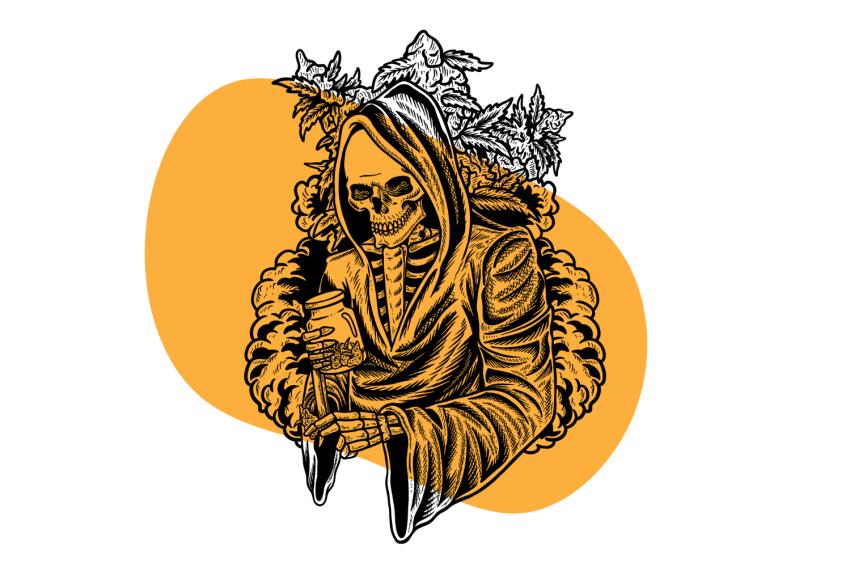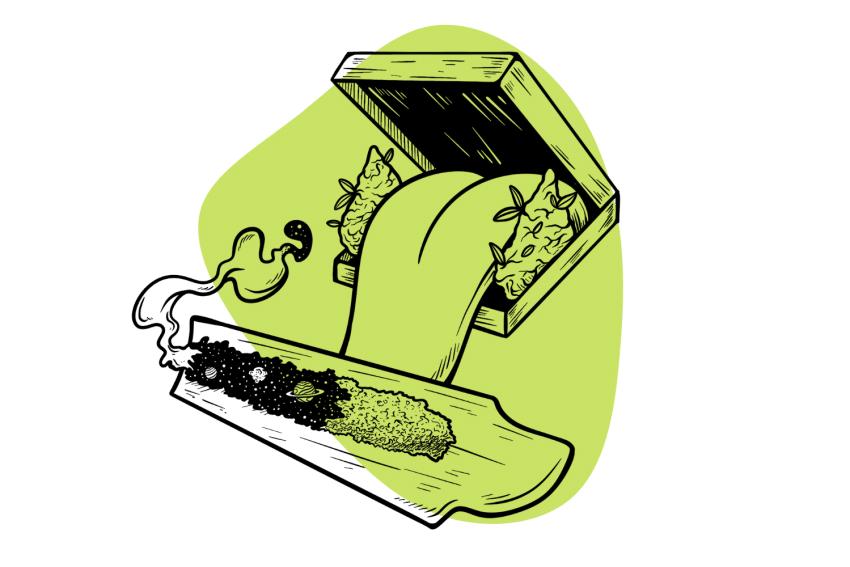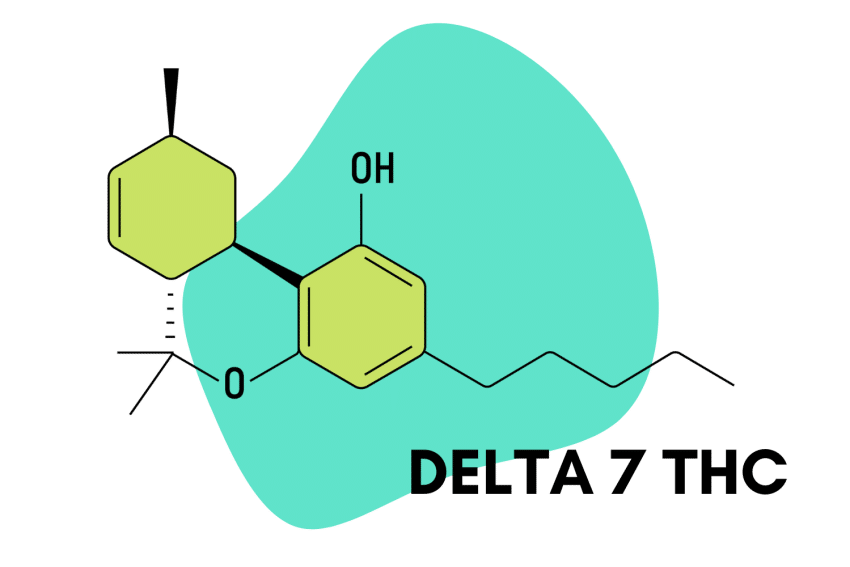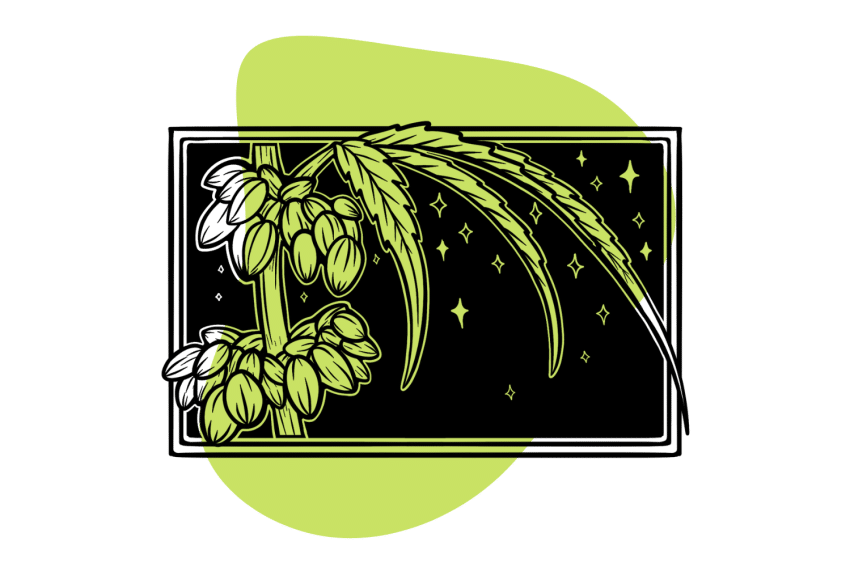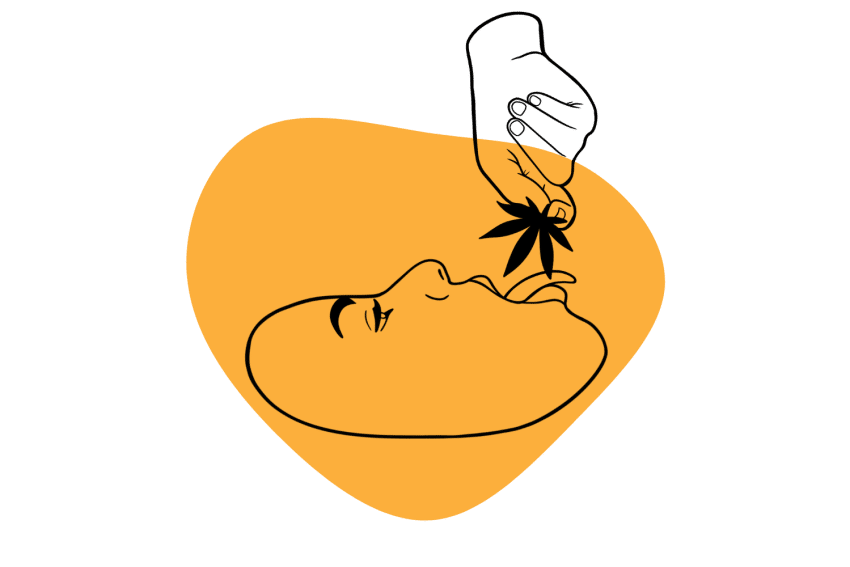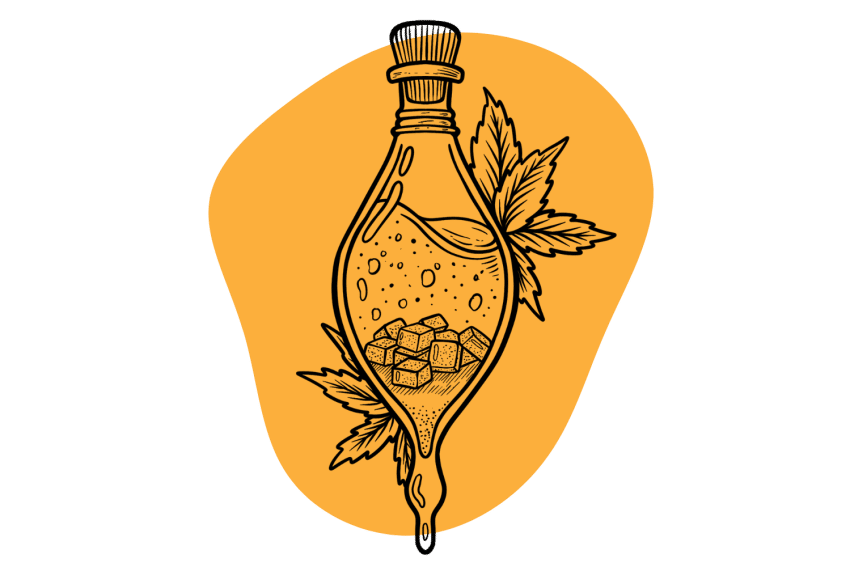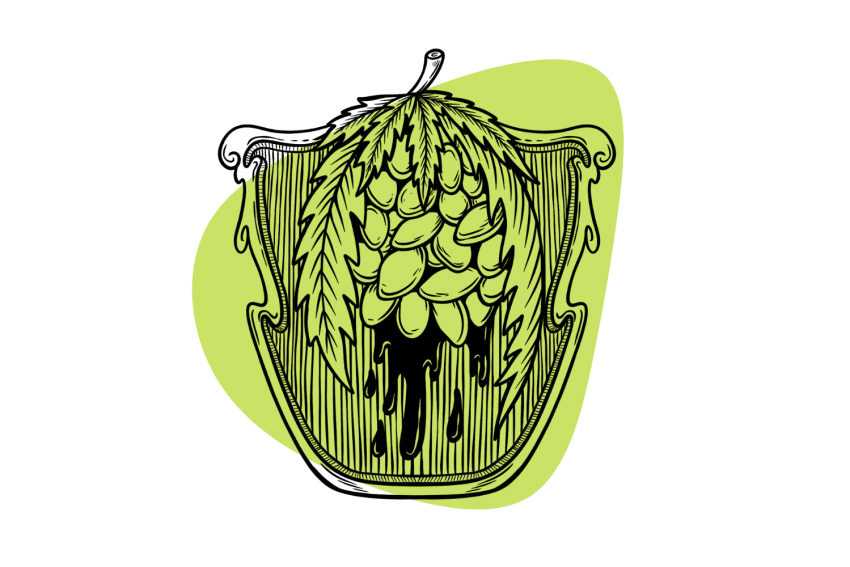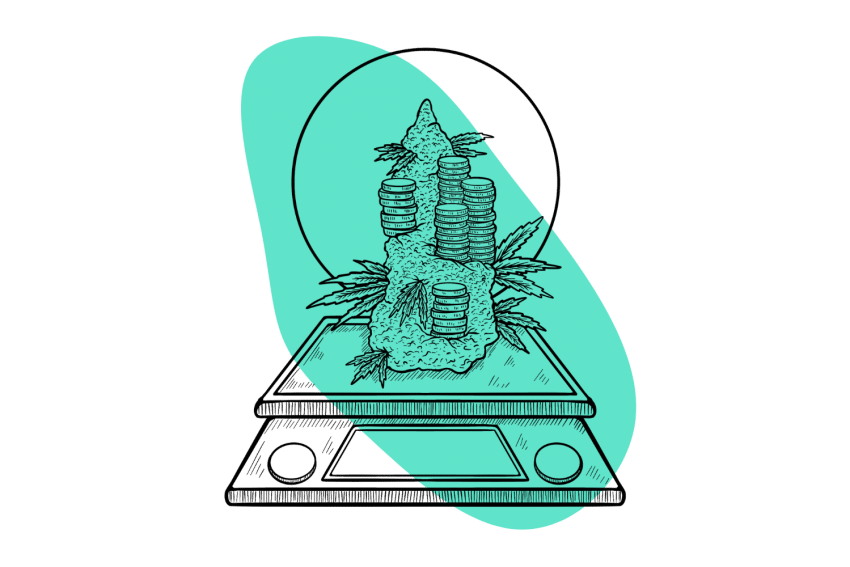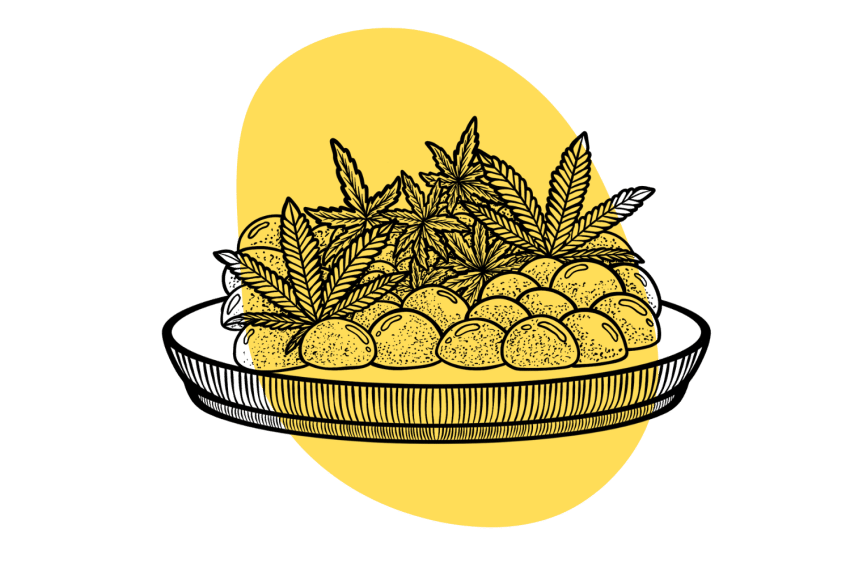Cannabis: The World’s Most Famous Psychoactive Plant
There’s much more to this infamous plant than meets the eye.
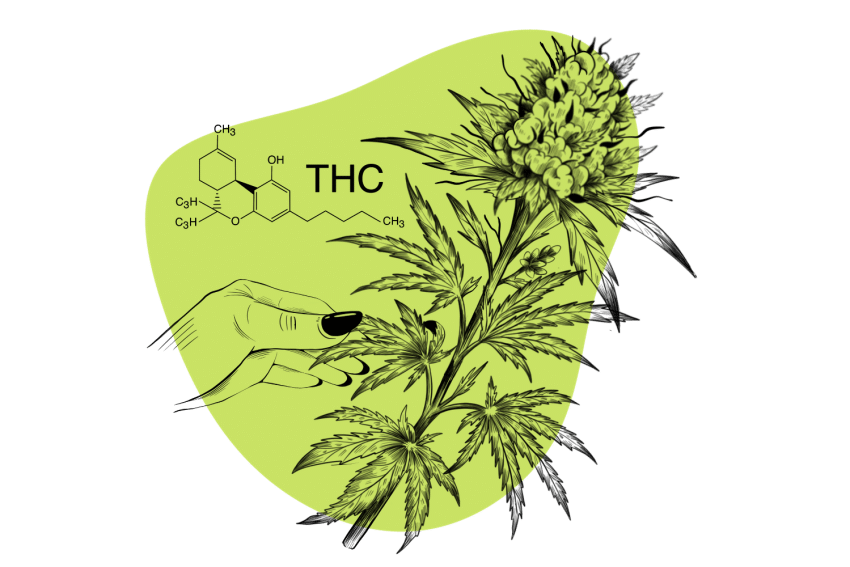
Cannabis is ubiquitous these days.
You can find hemp-derived CBD products featured on just about every online blog or media outlet in the world, and marijuana is making a strong comeback from prohibition.
In this article, we’ll cover how hemp and marijuana work in terms of both the psychoactive and non-psychoactive effects.
We’ll also cover how to use marijuana safely, what dose to take, and what risks and side effects to be wary of.
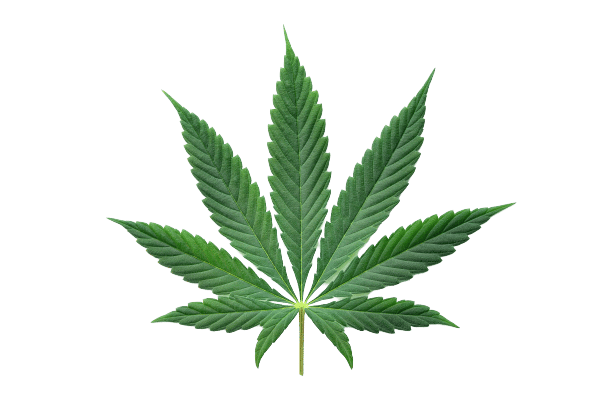
What is Cannabis?
Cannabis is a species of plant originating from Asia. It has a long history of use with humans for the purposes of divination, medicine, and the production of textiles.
The cannabis plant is dioecious — which means it has separate male and female plants (rather than growing both the male and female flowers on the same plant). The flowers from the female plants are the primary product people use for both medicine and recreational use.
The male version of this species is rarely used for much of anything aside from breeding.
The resin of the female cannabis flowers contains a high concentration of pharmacologically-active compounds. There are over 400 active ingredients in cannabis resin, each contributing something different to the overall effects.
The primary active ingredients are a group of compounds called phytocannabinoids.
Other active ingredients include over a dozen terpenes, sterols, esters, and fatty acids.
Cannabis products can be smoked, vaped, or concentrated into extracts and oils.
There are two primary divisions of cannabis products:
- Hemp products — non-psychoactive and usually focused around a cannabinoid called CBD (cannabidiol)
- Marijuana products — usually psychoactive and focused around a cannabinoid called THC (tetrahydrocannabinol)
Marijuana: Specs & Technical Details
| Botanical Name | Cannabis sativa, Cannabis indica |
| Level of Risk | Very low |
| Street Names | Ganja, weed, herb, mary jane, sinsemilla |
| Most Common Side Effects | Dizziness Anxiety Sedation Lethargy |
| Duration of Effects | 2-4 hours |
| Legality | Mixed: Legal in some countries/states & illegal in others |
Hemp vs. Marijuana: What’s The Difference?
Hemp and marijuana are technically the same species of plant — Cannabis sativa. But, there’s a big difference between the two from a regulatory standpoint.
Hemp plants are classified as any Cannabis sativa plants that produce less than 0.3% THC by dried weight.
Products made from these plants are completely legal and non-psychoactive (they won’t make you high). In some European countries, the limit of THC is 0.2% instead. Most CBD oils and delta 8 THC products are made from hemp plants.
Conversely, any Cannabis sativa plants that contain more than 0.3% THC are classified as marijuana.
Most (but not all) marijuana plants have high enough concentrations of THC to be psychoactive. Marijuana plants are illegal in most parts of the world. A few exceptions include Canada and specific US states. Marijuana is a Schedule I drug in the United States on a federal level — which places it in the same category as drugs like LSD and heroin.
Summary: What’s the Difference Between Marijuana & Hemp?
| Comparison | Hemp | Marijuana |
| Species | Cannabis sativa | Cannabis sativa or Cannabis indica |
| Growth Patterns | A tall, stalky plant resembling a small tree | Can be tall and stocky or short and bushy |
| THC Content | Less than 0.3% by dried weight | More than 0.3% THC by dried weight (usually much higher) |
| Primary Uses | Textiles, paper, biodiesel, hemp seeds, and nutritional supplements (e.g., CBD) | Recreational drugs, herbal medicine, nutritional supplements |
| Will It Make You High? | No psychoactive effects | Often has psychoactive effects (but not always) |
| Legality | Legal in most countries | Illegal in most countries (exceptions are Canada & select US states) |
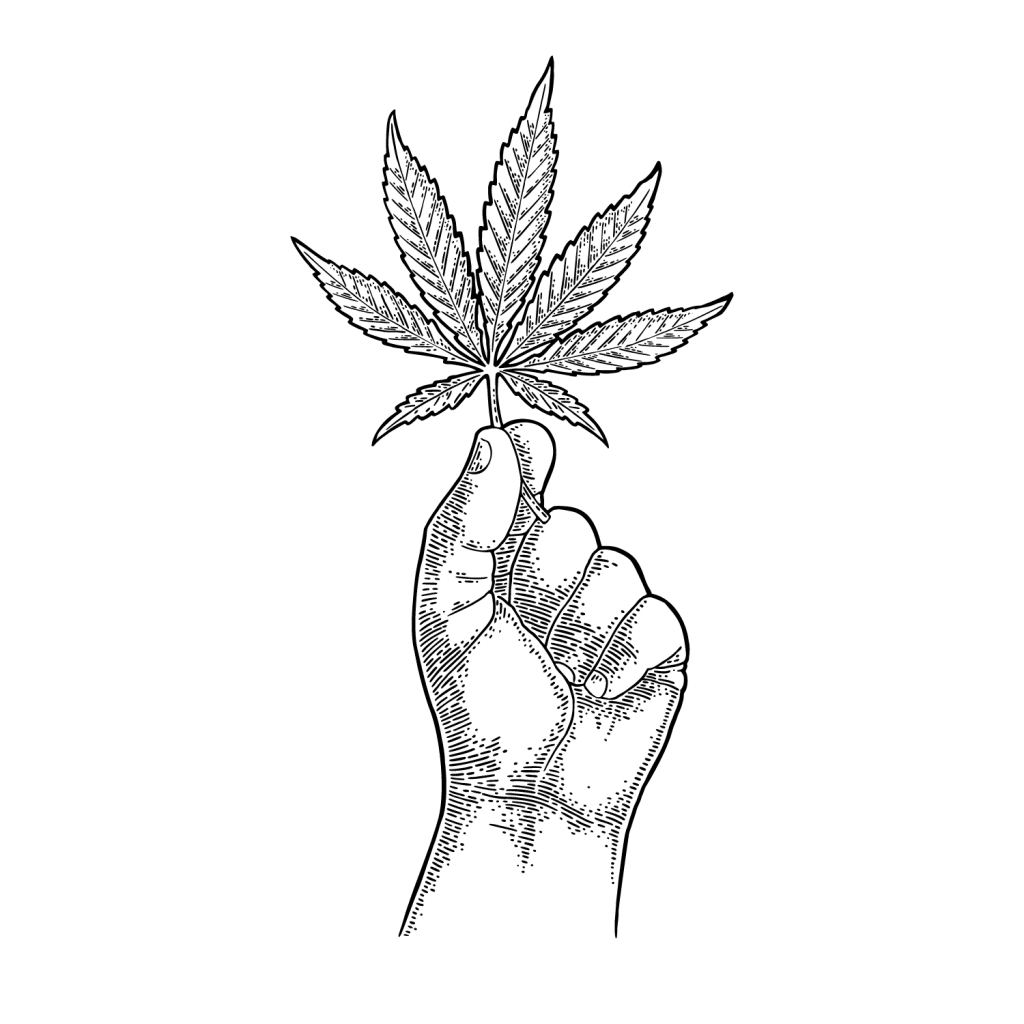
What’s The Dose of Marijuana (THC)?
The active ingredient in marijuana responsible for the mind-altering effects is THC (tetrahydrocannabinol).
The easiest way to assess the dose is to look at the relative dose of THC — however, other factors are also involved, such as the method of consumption and the other cannabinoids and terpenes present in the plant.
The standard psychoactive dose of THC is 10 mg.
Some people prefer much higher doses, up to around 50 mg, but this should only be attempted by people who understand how their body responds to THC. Taking too much can lead to side effects like anxiety, dizziness, paranoia, sedation, insomnia, and more. It can be very uncomfortable if you’re not expecting it.
Marijuana Equivalents With ~10 mg THC:
- THC Gummies — one 10 mg CBD gummy, or two 5 mg gummies
- THC Capsules — one 10 mg capsule, or two 5 mg capsules
- Marijuana Tincture — 1 mL of a 300 mg tincture, or 0.5 mL of a 600 mg tincture
- Marijuana Flower — highly dependant on the strain used (usually around 0.2 grams)
- Marijuana Extracts & Dabs — 10 mg of a 99% pure concentrate
What Factors Affect the Ideal Dose of Marijuana?
The dose of marijuana depends on many factors. One person may find 10 mg of THC to be just right; others might find the ideal dose is something much lower or much higher.
The main variables that can affect the dose include:
- Your size and weight
- Your experience and tolerance to marijuana products
- The level of intensity you’re looking to experience
- The type of marijuana product you’re using (smoked forms require lower doses than edibles, for example)
Microdosing THC
Some people prefer to use sub-perceptual doses of THC — also known as a microdose.
These doses are low enough that they won’t cause any psychoactive effects but high enough that they still offer a variety of benefits to the body.
The usual microdose is around 2.5 mg of THC.
However, everybody is different — the range for microdoses goes from 0.5 mg all the way up to 7.5 mg of THC.
Ideally, you’ll start with a very low dose and increase gradually once you know how your body responds. Once you start to feel noticeable effects from the THC, you’ve reached what’s called a threshold dose. This is the dose that starts to exert psychoactive effects.
A microdose is a dose below the threshold. You shouldn’t feel high while microdosing THC (or any substance, for that matter).
Related: The Ultimate Guide to Microdosing Psychedelics
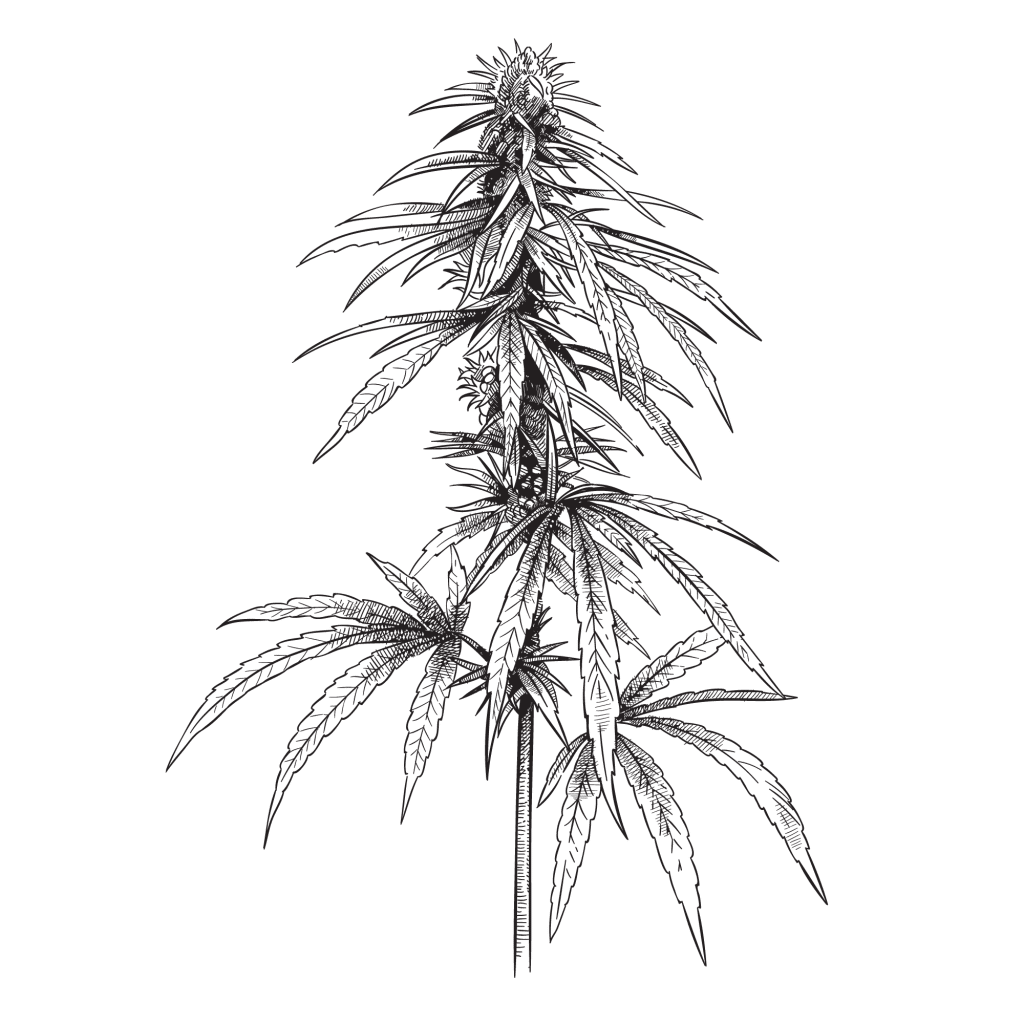
What’s the Dose of Hemp (CBD)?
The dose for hemp products is a little bit different than it is for marijuana. These products are non-psychoactive by default, and the primary ingredient for these products is CBD (cannabidiol).
The dose range for CBD is between 10 mg and 50 mg.
Some people take much higher doses (over 100 mg), but this should only be attempted once you’re familiar with how your body responds to CBD.
You’ll need to identify how much of each product to use individually based on the strength of the product. CBD gummies and capsules usually list the CBD dose per piece, so you can easily add them up to the desired dose.
For tinctures, you’ll need to figure out the potency in mg of CBD per milliliter of oil.
To find this, simply divide the total CBD content listed on the bottle but the bottle size (usually 30 mL).
For example, a 300 mg CBD oil (1 oz bottle) works out to 10 mg/mL. So the dose would be between 1 and 5 milliliters. 1 mL of CBD oil works out to one full dropper or 30 drops of oil.
Dosing Other Cannabinoids
There are lots of other cannabinoids produced in the hemp plant — many of which are becoming popular for supplemental use on their own.
Every cannabinoid has its own ideal dosage range, but just like CBD and THC, you’ll need to play around with the dose to find what works best for you. What works for one person may or may not be the ideal dose for you.
Cannabinoid Dosing Chart
| Cannabinoid Name | Dosage Range | Psychoactive? |
| Delta 9 THC | 10–50 mg | Yes |
| Delta 8 THC | 20–80 mg | Yes |
| Delta 10 THC | 20–80 mg | Yes |
| THC-O-Acetate | 5–20 mg | Yes |
| CBD | 10–50 mg | No |
| CBC | 10–50 mg | No |
| CBG | 10–50 mg | No |
| CBN | 25–50 mg | Mild |
What Does Marijuana Feel Like?
Marijuana is undeniably psychoactive, but it’s not psychedelic. Some people suggest the effects of marijuana are similar to alcohol, while others suggest the effects are more similar to LSD (lysergic acid diethylamide) — without the hallucinations.
The truth is that the high experience from marijuana is distinct in and of itself. It’s hard to compare other substances to the effects of marijuana.
Here are some of the effects you might experience while using marijuana products:
- Altered perception of time
- Altered depth perception
- Music & other sounds may be experienced differently
- A greater sense of connection with other people or the world around you
- You may feel relaxed or absent-minded
- Colors may appear brighter
- Your internal mood may be projected onto objects in your environment
- Hunger levels increase
- Mood changes (either good or bad)
Also see: List of 48 Trippy Websites To Explore.
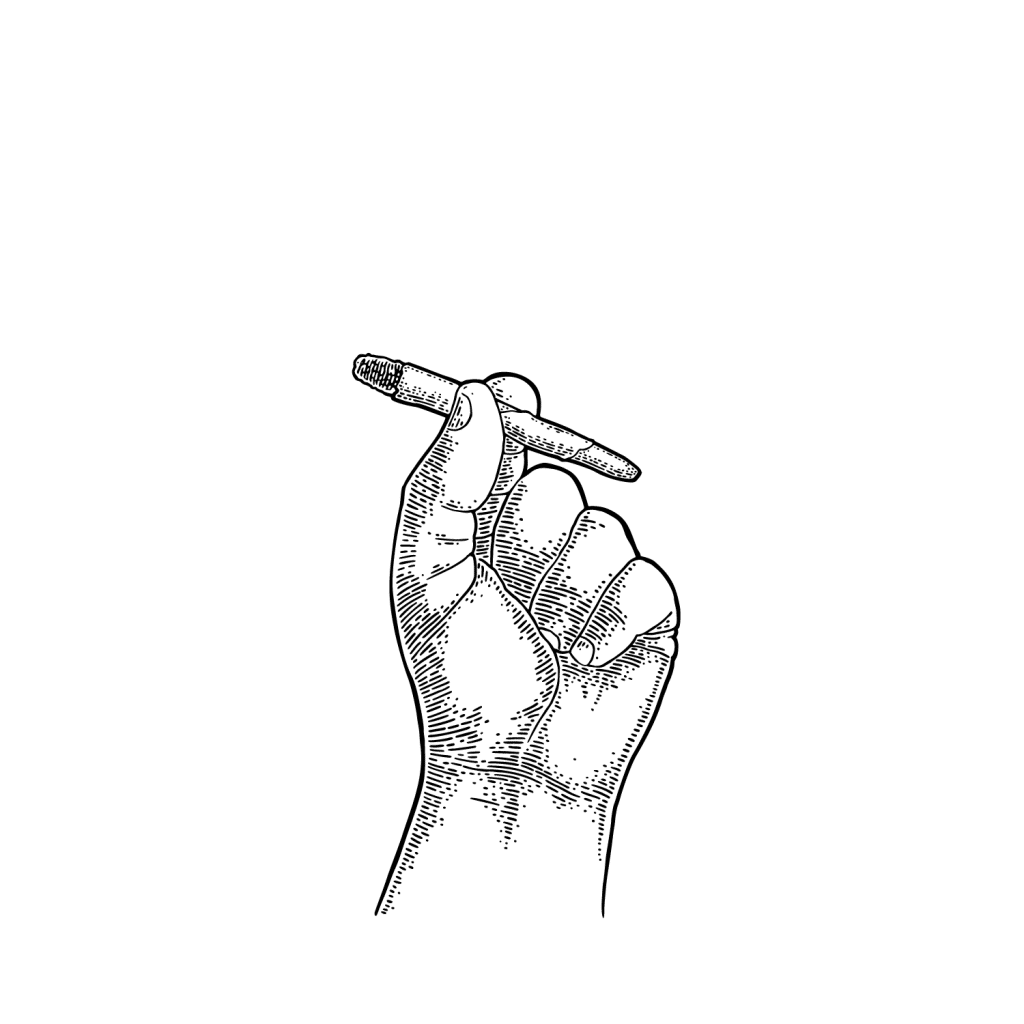
Medicinal Benefits of Cannabis
Cannabis has an impressive range of health benefits.
It achieves these broad-acting benefits by targeting a core neuro-regulatory system called the endocannabinoid system (ECS) — which is involved with maintaining homeostasis (AKA balance) of various organ systems in the body.
The ECS is involved in the regulation of the immune system, cardiovascular function, inflammatory response, neurological function, pain transmission, circadian rhythm, hunger, digestive function, and much more.
It’s through this system that cannabis is able to offer most of its benefits.
Summary: The Health Benefits of Cannabis
| Health Benefit | CBD | D9 THC | D8 THC | CBN | CBG | CBC | THCV |
| Alleviates Pain | ✓ | ✓ | ✓ | ✓ | ✓ | ✓ | |
| Reduces Inflammation | ✓ | ✓ | ✓ | ✓ | ✓ | ||
| Prevents Acne | ✓ | ✓ | ✓ | ||||
| Protects the Brain | ✓ | ✓ | ✓ | ✓ | ✓ | ✓ | |
| Regulates Mood | ✓ | ✓ | ✓ | ✓ | |||
| Alleviates Epilepsy | ✓ | ✓ | ✓ | ||||
| Relieves Anxiety | ✓ | ✓ | ✓ | ||||
| Stimulates Appetite | ✓ | ✓ | ✓ | ||||
| Inhibits Appetite | ✓ | ✓ | |||||
| Fights Cancer | ✓ | ✓ | ✓ | ✓ | ✓ | ||
| Alleviates Glaucoma Symptoms | ✓ | ✓ | ✓ | ✓ | |||
| Supports Sleep | ✓ | ✓ | ✓ | ✓ | ✓ |
1. Cannabis For Anxiety
There are several active ingredients in the cannabis plant that help relieve symptoms of anxiety. CBD, CBC, CBG, CBN, and low doses of THC have all been reported to reduce anxiety symptoms and promote a sense of calmness and relaxation.
Most of the research on the anxiolytic effects of cannabis involves the use of CBD.
CBD Offers Several Distinct Benefits On Anxiety:
- Increases activity of GABA to calm the mind
- Regulates serotonin & dopamine levels
- Promotes a more restful & restorative sleep
- Reduces cortisol levels (the stress hormone)
- Reduces neuroinflammation
- Protects the body from oxidative damage
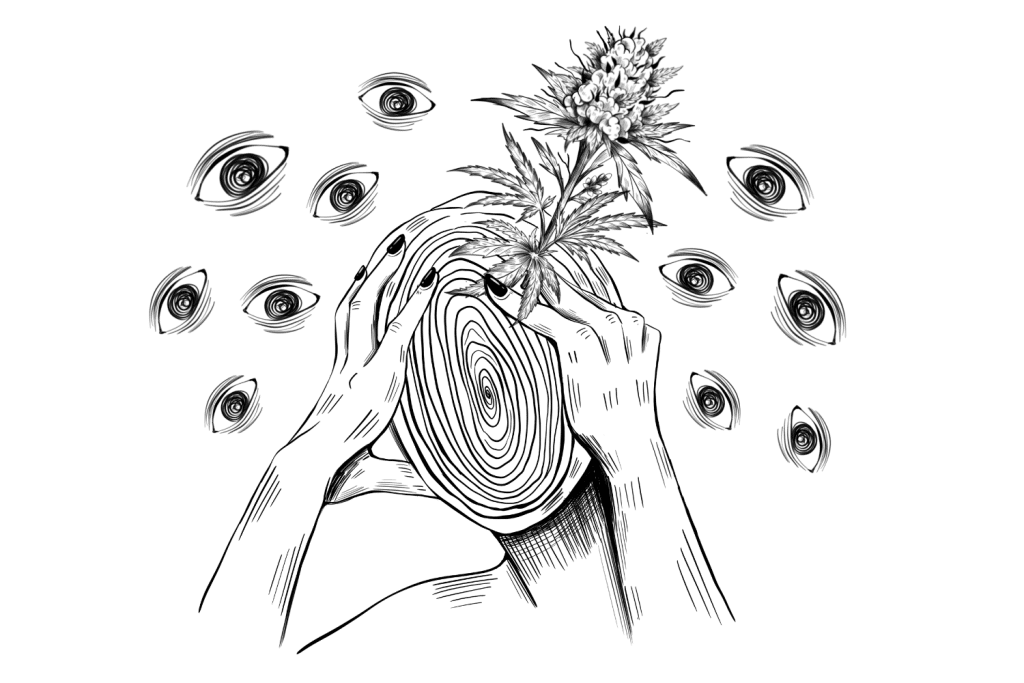
A Brazilian study compared the effects of CBD with benzodiazepines (pharmaceutical intervention for anxiety), ipsapirone (a serotonin-based anxiolytic), and placebo [6]. Forty patients were randomly assigned into groups of 10 and given one of the four treatments.
Subjects were then asked to perform a simulated public speaking task to compare the effects of each substance on anxiety levels. The study noted significantly lower anxiety scores in the groups administered CBD or ipsapirone compared to the benzodiazepine and placebo-control groups.
One of the primary mechanisms of action for the potent anxiolytic effects of CBD is through its effects on the GABA receptors in the brain [1]. GABA is the body’s primary neuro inhibitory compound — which means it reduces neurological excitability to reduce electrical activity in the brain. It directly opposes the effects of glutamate, which is largely responsible for the excessive electrical activity involved with anxiety.
Other studies have shown that CBD increases activity at the 5HT1A serotonin receptors [2]. Low activity at this serotonin receptor has been associated with panic and anxiety attacks [3].
CBD has also been shown to exert a mildly stimulating effect on dopamine [4]. Mice with low dopamine levels are frequently used as a model for studying the effects of generalized anxiety symptoms [5]. It’s thought that increasing dopamine activity can reduce feelings of anxiety.
CBD has also been shown to reduce cortisol levels [7] and promote a longer, more restorative sleep [8] — both of which have a direct impact on perceived stress and anxiety levels.
2. Cannabis For Pain
There are several analgesic compounds produced in hemp, but none as well studied as CBD.
The Effects of CBD For Pain Include:
- Regulates the vanilloid pain receptors
- Reduces inflammation
- Regulates nerve cell function (supports causes of nerve pain)
- Alleviates common side-effects & comorbidities of pain (such as depression or insomnia)
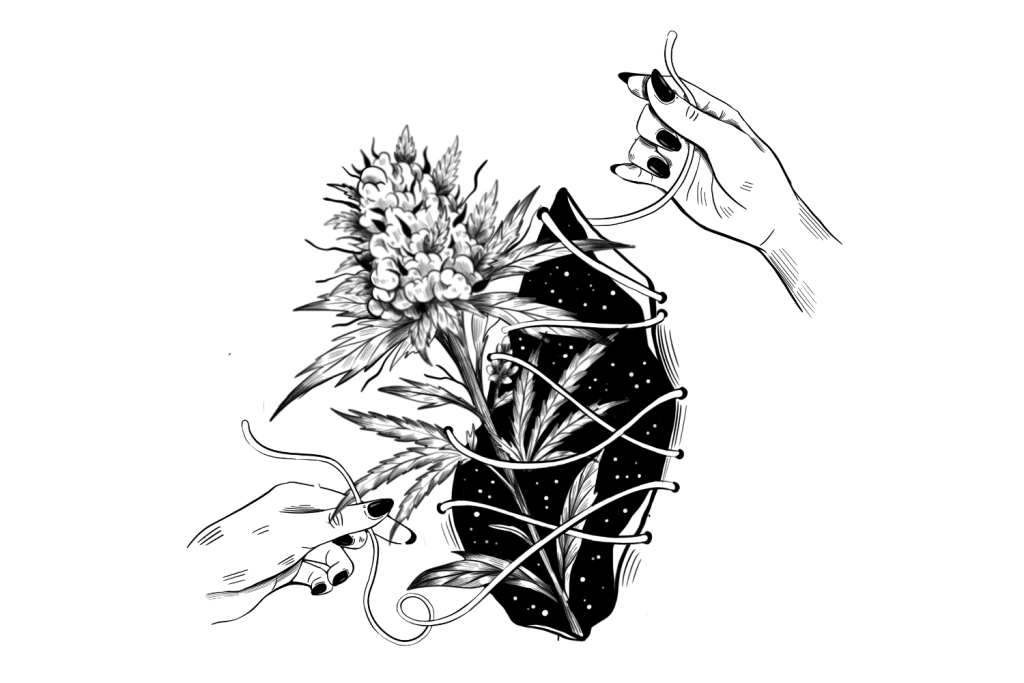
One of the key ways CBD (and other cannabinoids) are thought to reduce pain is by alleviating inflammation (more on this in the next section).
It’s also been shown to block pain by acting on a series of receptors located in the spinal cord and brain called the vanilloid receptors. The vanilloid receptors are partly responsible for regulating the transmission of pain signals from the body to the brain [10].
By activating these receptors, CBD is able to reduce the strength of the pain signal before it reaches the brain, where it’s interpreted as pain.
A review of several clinical trials involving a pharmaceutical preparation of CBD and THC (Sativex®) reported consistent and marked improvement in pain scores and sleep onset among the treatment group [11]. This review involved more than 2000 patients and 1000 patient-years of exposure to these cannabinoids.
The analgesic effects of CBD are very diverse. It’s been shown to reduce pain for a wide range of different types of pain — including cancer [12], fibromyalgia [13], multiple sclerosis [14], arthritis [15], and more.
3. Cannabis For Inflammation
Many of the active cannabinoids and terpenes in the cannabis plant (both hemp and marijuana) offer powerful anti-inflammatory benefits. This plant offers some of the most robust anti-inflammatory effect profiles in the plant kingdom.
Few natural products can compete with cannabis in the anti-inflammatory department because it works on several distinct pathways for pain and inflammation — rather than just one like most pharmaceutical anti-inflammatories.
The Effects of Cannabis on Inflammation Include:
- CBD slows the breakdown of anandamide (a natural anti-inflammatory)
- Many cannabinoids are structurally similar to natural anti-inflammatory messengers
- CBD activates the vanilloid receptors, which play a role in the regulation of inflammatory messengers (TNF-a, IL-4, IL-12)
- CBD slows the activation of T cells involved with autoimmune inflammation
- CBD triggers apoptosis (programmed cell death) in dysfunctional or infected cells (a common cause of chronic pain)
- CBD inhibits key inflammatory enzymes (including LOX and COX)
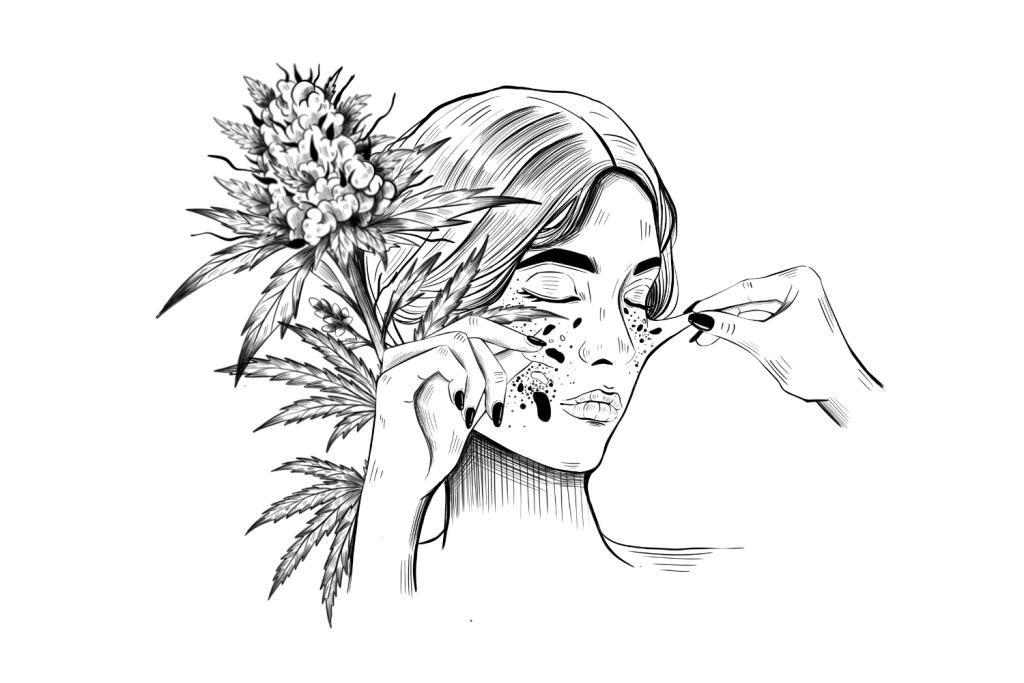
CBD is one of the most well-studied and powerful anti-inflammatories in the natural kingdom. It’s been shown to provide consistent relief from inflammatory states involved with autoimmunity [16], cancer [17], rheumatoid arthritis [18], and more.
Inflammatory mediators inhibited or regulated by cannabinoids include:
- LOX — one of the key rate-limiting inflammatory enzymes (CBD) [9]
- COX — the second key rate-limiting inflammatory enzyme [17]
- Histamine — involved in the inflammatory response initiated by exposure to allergens (THC) [19]
- IFN-γ — involved in long-term sustaining inflammatory disorders (CBD) [20]
- NF-kB — one of the key inflammatory messengers involved with cancer and autoimmunity (CBD) [21]
- TNF-α — involved with whole-body inflammation (CBD) [22]
- IL-2 — commonly involved with cancer and autoimmune-related inflammation (THC & CBN) [23]
- IL-4 — involved with autoimmune-related inflammation (CBD) [22]
- IL-6 — involved with the initial cascade of inflammation (CBD) [22]
- IL-8 — activated during infection to produce fast-onset inflammation (CBD) [24]
- IL-12 — intimately involved with autoimmune-related inflammation (CBD) [25]
- IL-13 — has both anti-inflammatory and pro-inflammatory actions (THC & CBN) [23]
4. Cannabis For Sleep
Several active cannabinoids in the cannabis plant, as well as a variety of terpenes, offer sleep-supportive benefits.
The primary sleep-supportive cannabinoids in the plant include:
- CBD — sedative in higher doses but stimulating in lower doses
- THC — sedative in lower doses but stimulating in higher doses
- CBN — sedative at all doses
- CBC — mildly sedative at all doses
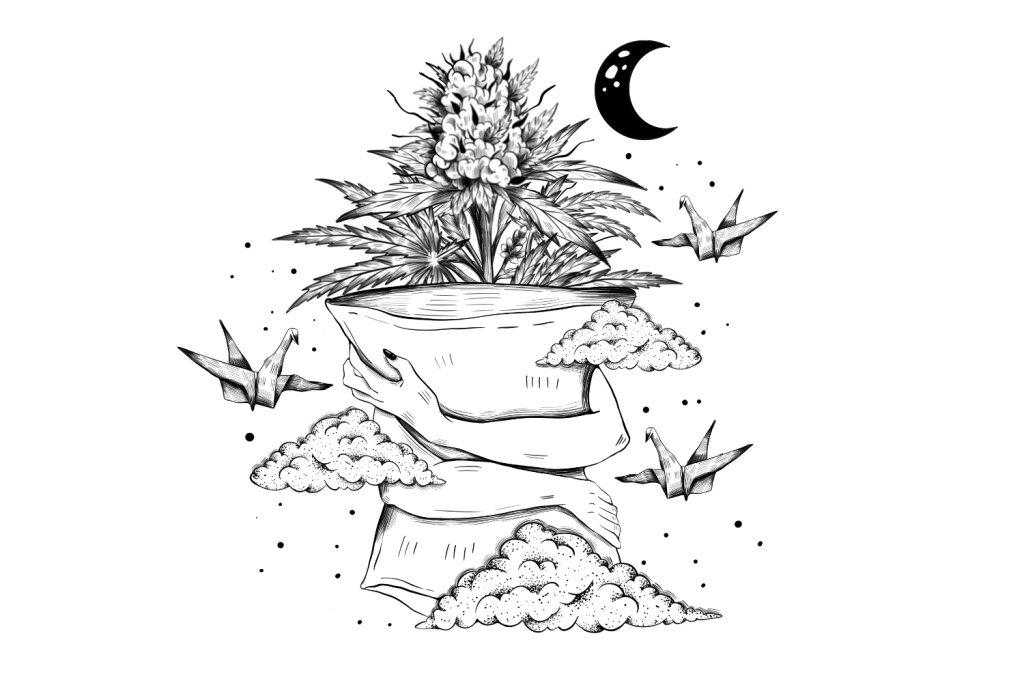
Studies have shown CBD can be useful for improving the quality of deep sleep, as well as total sleep duration [26]. It also helps through its ability to alleviate many of the common underlying causes of insomnia — such as chronic pain and anxiety.
THC has also been well-studied for its effects on sleep. Only lower doses of THC are considered sedative (5–20 mg). Higher doses have the opposite effect and reduce sleep quality [27].
Marijuana vs. Other Psychoactive Substances
Marijuana is by far the most common of the grey-area of illicit psychoactive substances in the world. While it’s not innately psychedelic, it does offer a distinct psychoactive effect.
The psychoactivity of marijuana is strong. Only a few milligrams of the active ingredients and less than a single gram of the raw plant are needed to produce distinct changes in perception. It’s also considered one of the safest psychoactive substances.
Only very high doses of marijuana will produce hallucinations, and even at these doses, they’re relatively mild compared to other known psychoactive substances.
Let’s compare the effects of marijuana against some of the other common or similar psychoactive substances.
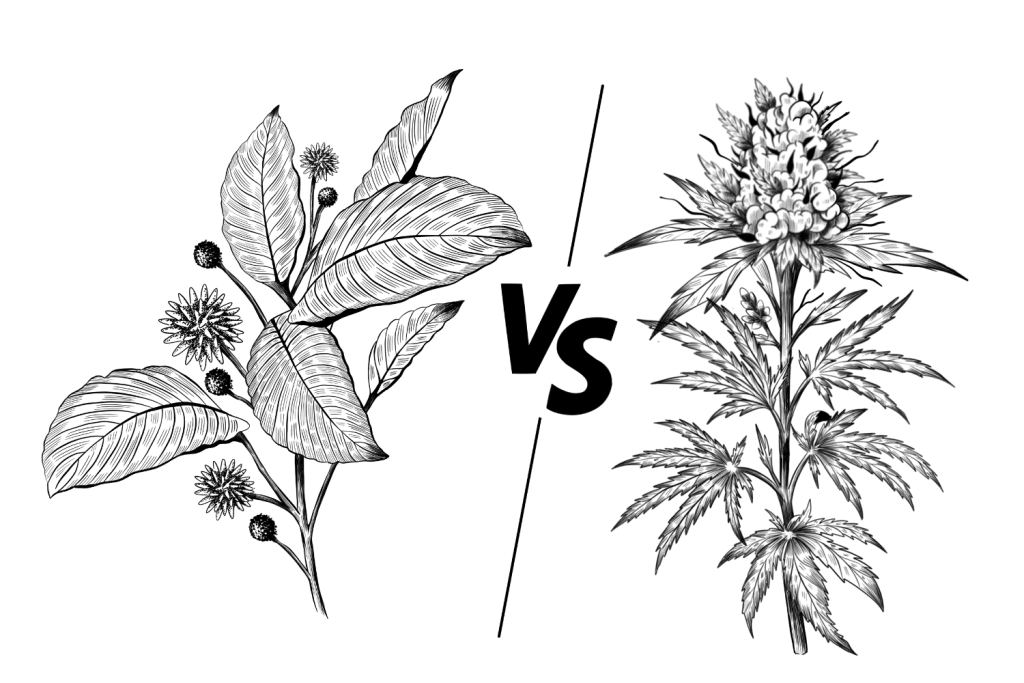
Marijuana vs. Kratom
Kratom (Mitragyna speciosa) is a tropical plant species originating from Southeast Asia. It’s a member of the coffee family of plants Rubiaceae — and is often even used as an alternative to coffee.
On paper, kratom and marijuana are very similar. Both herbs are useful for managing pain and anxiety and promoting a deeper, more restorative sleep. However, the effects of these herbs are fundamentally different.
Kratom is a potent stimulant at lower doses — with effects very similar to coffee. It’s used at these doses to increase energy, promote focus and concentration, and alleviate lethargy or mental fatigue.
In higher doses, the effects of kratom shift. It becomes much more relaxing and sedative. Some strains are powerful euphorics.
Marijuana can also be stimulating and relaxing — but the doses are flipped. Low doses of marijuana are more relaxing, while the higher doses are more stimulating.
Kratom intoxication is more similar to drinking alcohol than marijuana. There isn’t much of a visual component like there is with marijuana, and it has a much stronger euphoric effect.
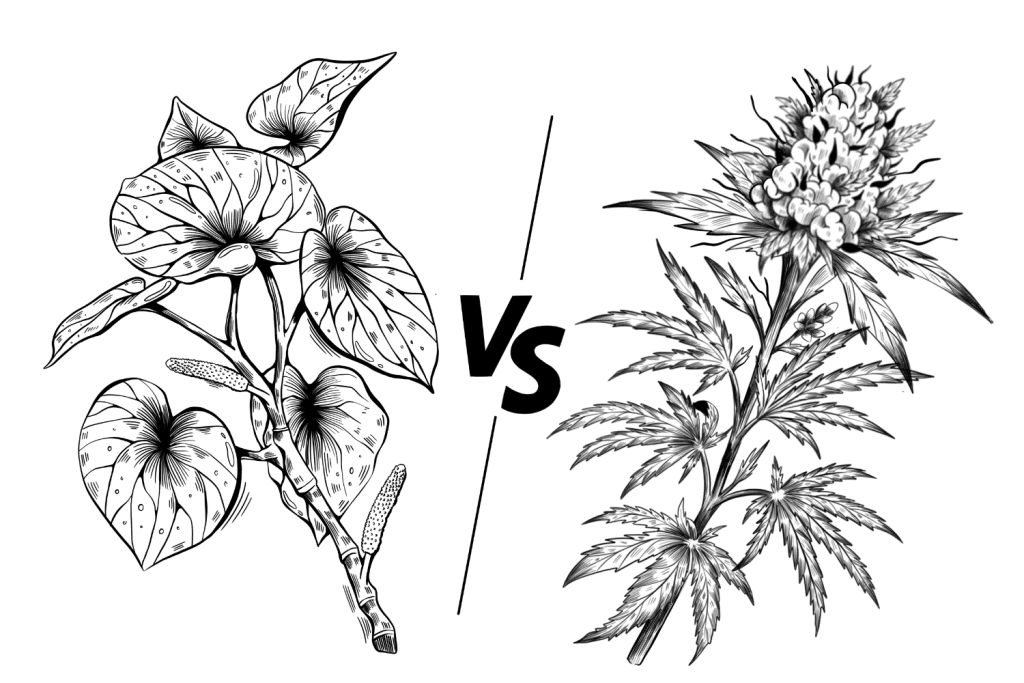
Marijuana vs. Kava
Kava (Piper methysticum) is a traditional relaxing herb from tropical islands of the pacific ocean.
Kava doesn’t make you feel high, and it doesn’t make you feel drunk — but it’s somewhere in between the two.
The effects of kava aren’t as well-rounded as marijuana, and the potency of effects is much milder. Kava won’t make you feel high, even at very strong doses.
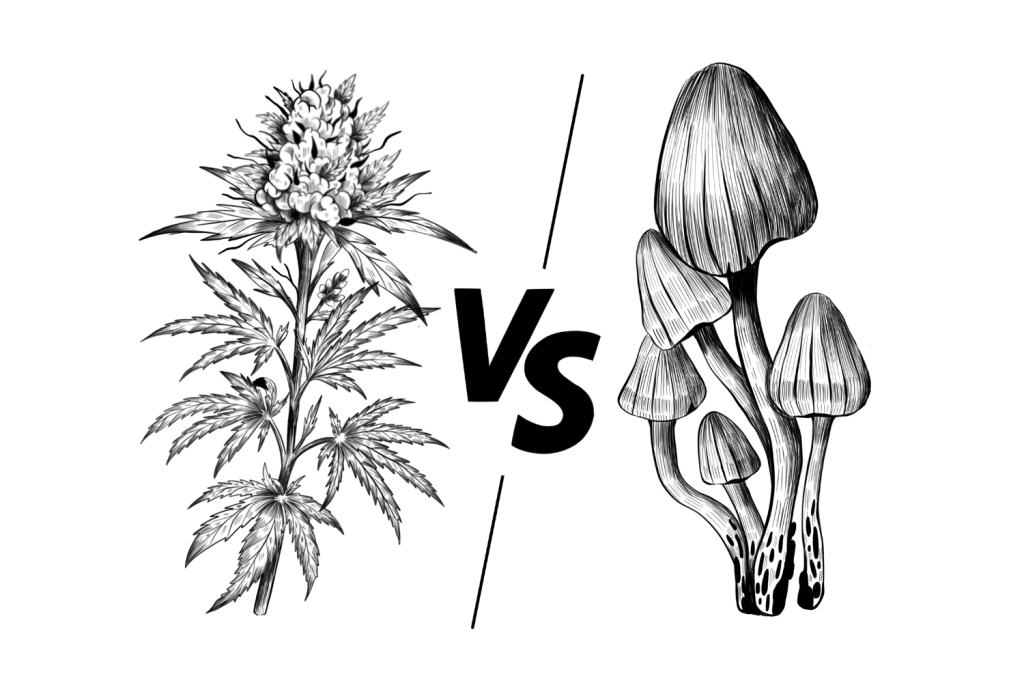
Marijuana vs. Magic Mushrooms
Marijuana and magic mushrooms have many similarities in their use for personal and spiritual growth and guidance — but the effects are very different.
Mushrooms are powerfully psychoactive. At a dose of around 2 grams or more, the experience involves strong visual and auditory hallucinations, changes in the perception of time, and introspective thoughts and emotions. Higher doses of mushrooms can lead to ego-death experiences.
Magic mushrooms work by targeting the 5-HT2C receptors in the brain. This is the same mechanism other common psychedelics use to exert their effects — including LSD, mescaline, 5-MeO-DMT, and ayahuasca.
The psychoactive effects of marijuana also rely on the serotonin receptors — but the action is much milder and indirect. The active ingredient, THC, targets the CB2 receptors in the brain, some of which are involved with the regulation of serotonin in the brain, which is responsible for the perceptual changes involved with marijuana.
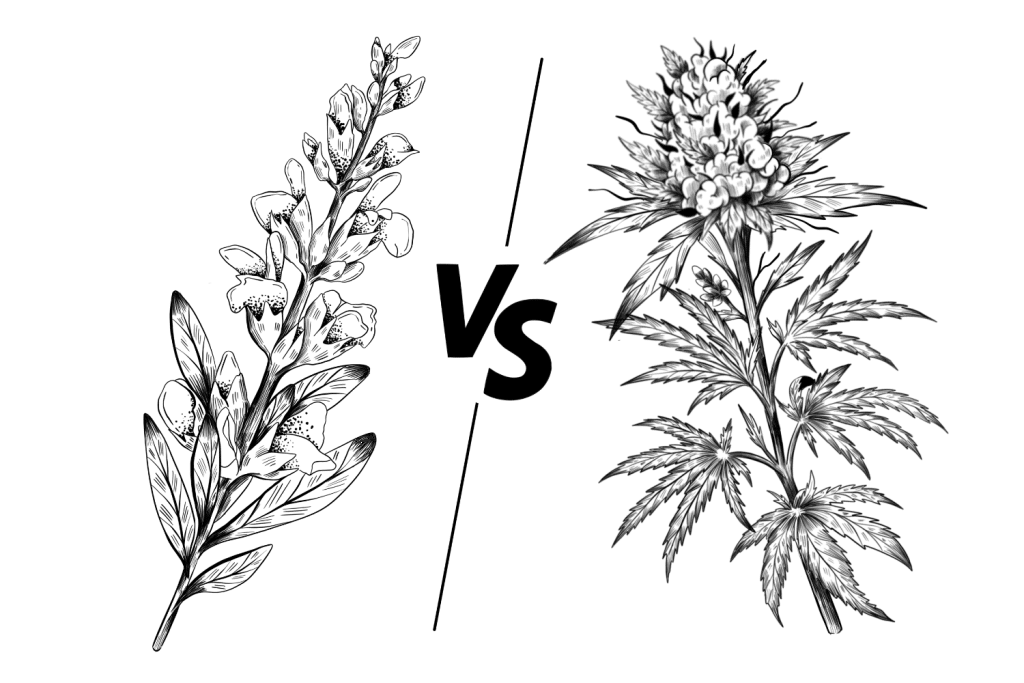
Marijuana vs. Salvia
Salvia (Salvia divinorum) contains a compound called salvinorin A — which is the most psychedelic compound in the natural kingdom.
The effects of salvia are nothing like that of marijuana. It’s a powerful psychedelic — inducing visions that are often chaotic and completely untethered from reality. Salvia is a dissociative that can separate your ability to differentiate between what’s real and what’s not.
The only similarities between these two plants are in how they’re used. Both marijuana and salvia can be taken by smoking the raw herb.
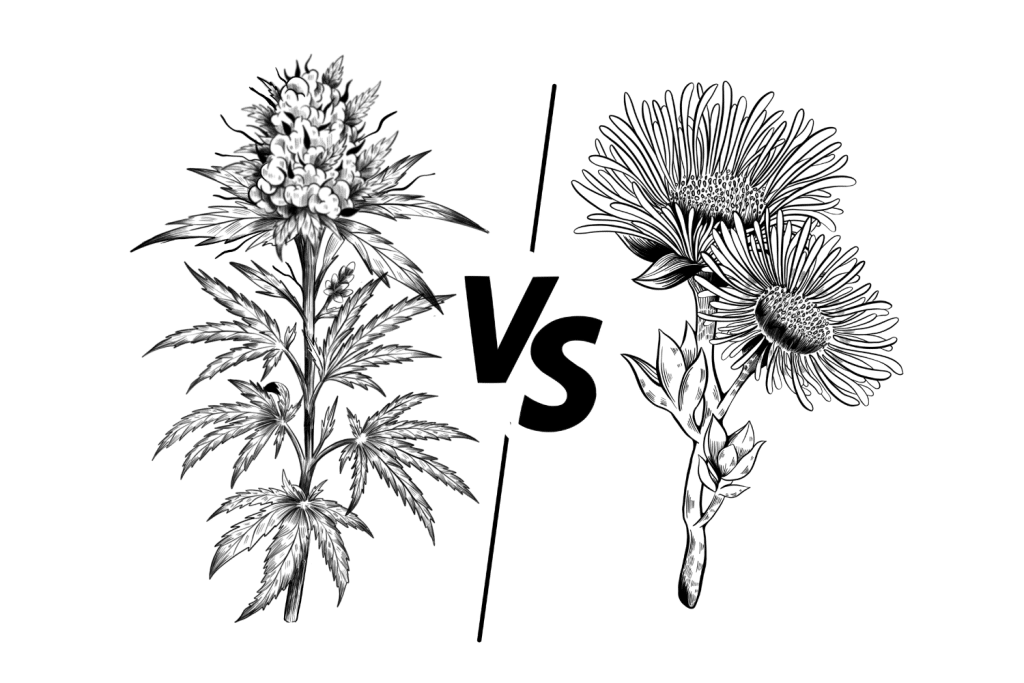
Marijuana vs. Kanna
Kanna (Sceletium tortuosum) is a mildly psychoactive herb used to reduce anxiety and induce a mild euphoric and relaxed mindset. It has similar benefits to marijuana but acts through a different set of mechanisms.
Kanna relies on three primary ingredients to exert its effects — mesembrine, mesembrenone, mesembrenone, and tortuosamine. Unfortunately, there still isn’t a great deal of scientific evidence available to help us understand exactly how kanna works.
Is Marijuana Safe?
Nobody has ever overdosed from using marijuana — but this doesn’t mean it’s completely safe.
Just about anything is safe to use in moderation — this includes cannabis. While you’re not going to overdose on marijuana, there is such a thing as too much weed.
Summary: The Dangers of Marijuana Include:
- Smoking & vaping are harmful to our health
- We may form an addiction to marijuana over time
- Marijuana can trigger psychosis in susceptible individuals
- Marijuana may interfere with other medications you’re using
The Dangers of Smoking & Vaping Marijuana
Smoking weed is still smoking. There’s a common misconception that smoking weed is in some way safer than smoking tobacco — but this is fundamentally untrue. Byproducts of the combustion process create chemicals such as carbon monoxide, carbon dioxide, benzene, sulfur dioxide, nitrogen oxides, fine particulate, and radioactive isotopes — all the same stuff that makes tobacco so dangerous.
Vaping marijuana is only slightly better.
While initially, it was thought that because there’s no combustion taking place with vaporization, it would be safer than smoking. There’s some truth to this, but it doesn’t provide the whole picture.
Some of the byproducts formed from the ingredients in vaporizers (propylene glycol and glycerol) include formaldehyde and hemiacetals such as acetaldehyde [28]. Formaldehyde is a Group 1 carcinogen associated with a 5–15 times higher lifetime risk of cancer. The hotter the coil gets while you vape, the higher the risk.
Marijuana & Drug Interactions
Everything you take into the body has the potential to interact with each other. There are three main ways a drug can interact with another substance:
- Increased effect — marijuana may have a similar effect as a drug or medication, causing the effects to become much stronger than anticipated
- Decreased effect — marijuana may negate the effects of a drug, causing it to become ineffective for managing the disease or disorder it was prescribed for
- Metabolic interaction — all drugs are metabolized by the liver; if marijuana competes for the same pathways of metabolism, it can cause medications to remain in the bloodstream for longer periods of time
There are many potential interactions between drugs and marijuana. If you’re using medications for any reason, you should speak with your doctor before using marijuana. The list of potential interactions is very long and comes down to a case-by-case basis.
The most problematic categories of drugs that may interfere with marijuana include:
- Antipsychotics
- Antihypertensives
- Blood-Thinners
- Other Heart Medications
- Antifungals
- Antibiotics
- Antidepressants
- Benzodiazepines
- Barbiturates
Side Effects of Marijuana
Marijuana comes with a few side effects to be aware of as well. Some of these side effects are also the benefits of the plant. They’re only considered a side effect if it was an effect you didn’t want from using the substance. This includes the psychoactive effects, sedative effects, and stimulating effects.
The side-effects of marijuana may include:
- Altered perception of time
- Altered visual & auditory perception
- Impairments in judgment
- Increased (or decreased) anxiety
- Red eyes
- Rapid heart rate (tachycardia)
- Increased hunger levels (munchies)
- Sedation or stimulation
- Cough or throat irritation
- Memory loss
- Slower reaction time
Is Marijuana Addictive?
Just about anything can be addictive — substances like marijuana that directly alter our mood and mind state are especially susceptible.
Compared to other psychoactive substances, marijuana has a very low risk of forming addiction — but it’s not impossible. Most people who are addicted to marijuana or suffer from “cannabis abuse disorder” are addicted to the effects of the substance rather than being physically addicted to the plant itself.
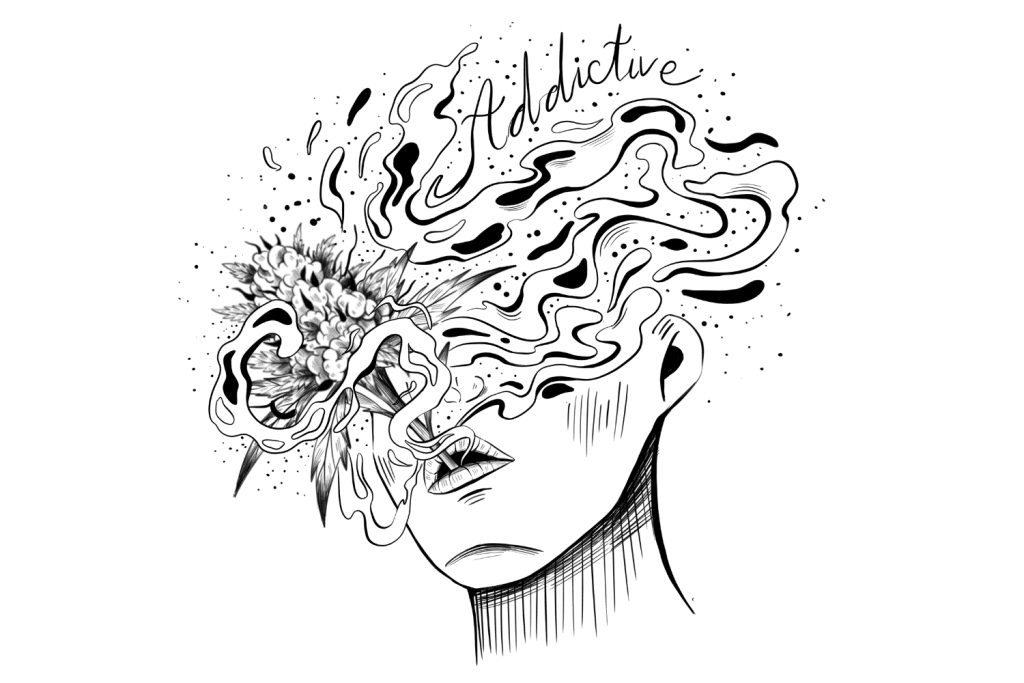
It’s unlikely to feel withdrawal symptoms when not using marijuana, but many people rely on the plant as an escape from their pain, discomfort, or depression. This is the most common reason someone forms an addiction to any substance — they’re seeking an escape from a reality they feel is too painful or unbearable in some way.
Whether this is because of depression, anxiety, chronic pain, or something else. Marijuana helps with all of these symptoms, so it makes sense that someone would continue to seek out the effects of this plant to remove these barriers that interfere with their ability to enjoy life and feel happy.
In moderation, this is totally fine, and very few people will feel addicted to the plant. But constant, long-term use can have a negative impact on your health and quality of life. This may include:
- Heart palpitations or heart disease
- Smokers cough or lung disease
- Insomnia
- Lack of motivation
- Loss of libido
- Inattentiveness to other roles or responsibilities
- Social isolation
Addiction happens when someone continues to use the plant compulsively, even when the substance has a clear detrimental impact on their health or quality of life.
If you’re using marijuana constantly from the moment you wake up to the moment you fall asleep, and you’re unsatisfied with the way you feel if you’re not high — you may be addicted to marijuana.
Is Marijuana Legal?
The legal status of marijuana is complicated. To make matters even more confusing, it’s changing on nearly a monthly basis at this point.
The general consensus around the world is that marijuana is illegal — often included in the highest tier of drugs that bring the most severe penalties.
But times are changing.
In the United States, there are currently nine states that have legalized marijuana for recreational purposes and dozens more that allow the plant to be used with medical approval. However, federally, the plant is still listed as a Schedule I drug alongside LSD, heroin, and cocaine.
Currently, the only two countries that have completely legalized marijuana on a federal level are Uruguay and Canada.
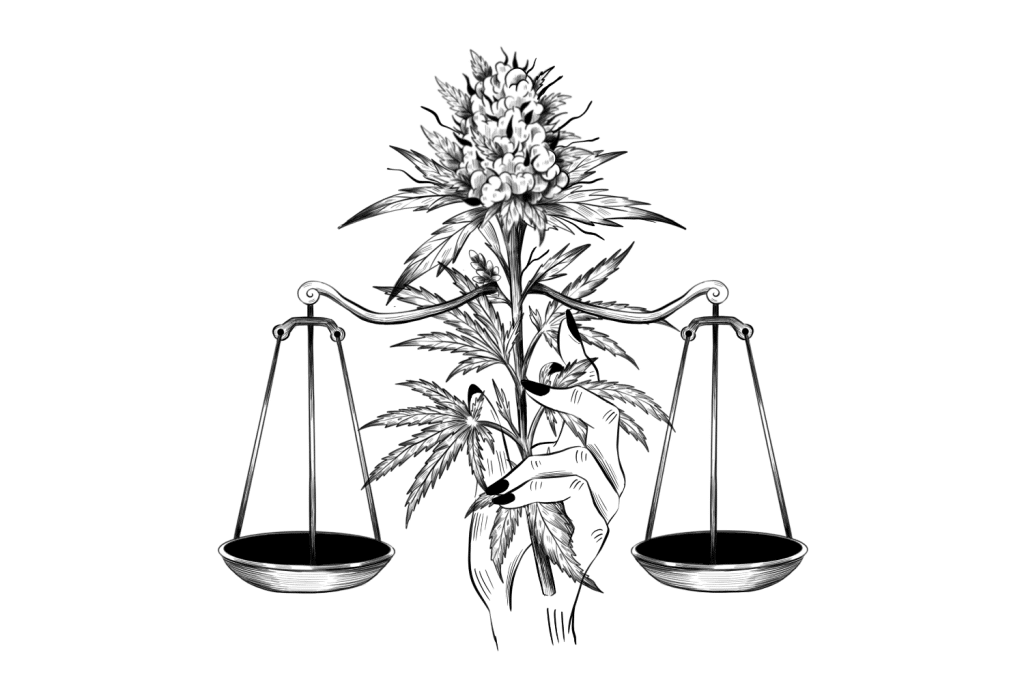
Most other countries still list marijuana as an illegal substance but have become much more relaxed on enforcing these laws.
It’s very likely that marijuana will be legal throughout most of the world within the next couple of years.
The hemp form of the plant is already legal in most places. In North America, any Cannabis sativa plant that produces 0.3% THC or less by dried weight is classified as hemp and considered a food supplement rather than a drug.
Europe has similar laws but has a slightly lower threshold of THC at 0.2% instead.
How Does Cannabis/Marijuana Work?
There are more than 400 active ingredients in marijuana and hemp plants. The primary ingredients are cannabinoids like THC, CBD, CBC, and CBN, along with dozens of terpenes and other phytochemicals.
The majority of the plants’ effects rely on an interaction with the endocannabinoid system (ECS). This system is responsible for regulating virtually every process in the human body.
What Is The Endocannabinoid System?
The endocannabinoid system consists of a series of receptors and associated hormones.
There are two types of ECS receptors (with some evidence to suggest a yet undiscovered third type). The CB1 receptors are primarily found in the brain and spinal cord, while the CB2 receptors are found on the immune cells and throughout various organs in the body.
The primary role of the ECS is to regulate homeostasis — which is the balance between the various organs of the body. It’s involved with the regulation of temperature, hormones, immune activity, neurological function, and more.
This system transmits messages in the opposite direction to nerve impulses. In this way, it serves as the “read-receipts” for the nervous system — providing feedback to the sender that the message was received.
When a signal is sent to the liver, the ECS sends a message in the opposite direction to let the sender know it was received and action was taken.
This may seem small, but the impact of this system is massive. We need the ECS to keep our organs working in tandem. It’s necessary to maintain the tight equilibrium the human body requires to remain healthy.
Cannabinoids
There are well over 100 individual cannabinoids in the cannabis plant, but the majority of the cannabinoid profile consists of just seven cannabinoids.
Let’s cover each one in more detail, including their associated effects.
1. Delta 9 THC
Delta 9 THC is the primary compound in marijuana that makes users feel high. It has a particular affinity for binding to the CB1 receptors — most of which are located in the central nervous system. Some of these receptors cause an activation of the 5-HT2A receptors in the prefrontal cortex. This is thought to be the primary mechanism of action for this compound’s psychoactive effects.
The benefits of delta 9 THC include:
- Alleviates pain & inflammation
- Supports neurological function
- Improves sleep onset (low doses)
- Boosts mental energy levels (high doses)
- Reduces intraocular pressure
- Stimulates the appetite
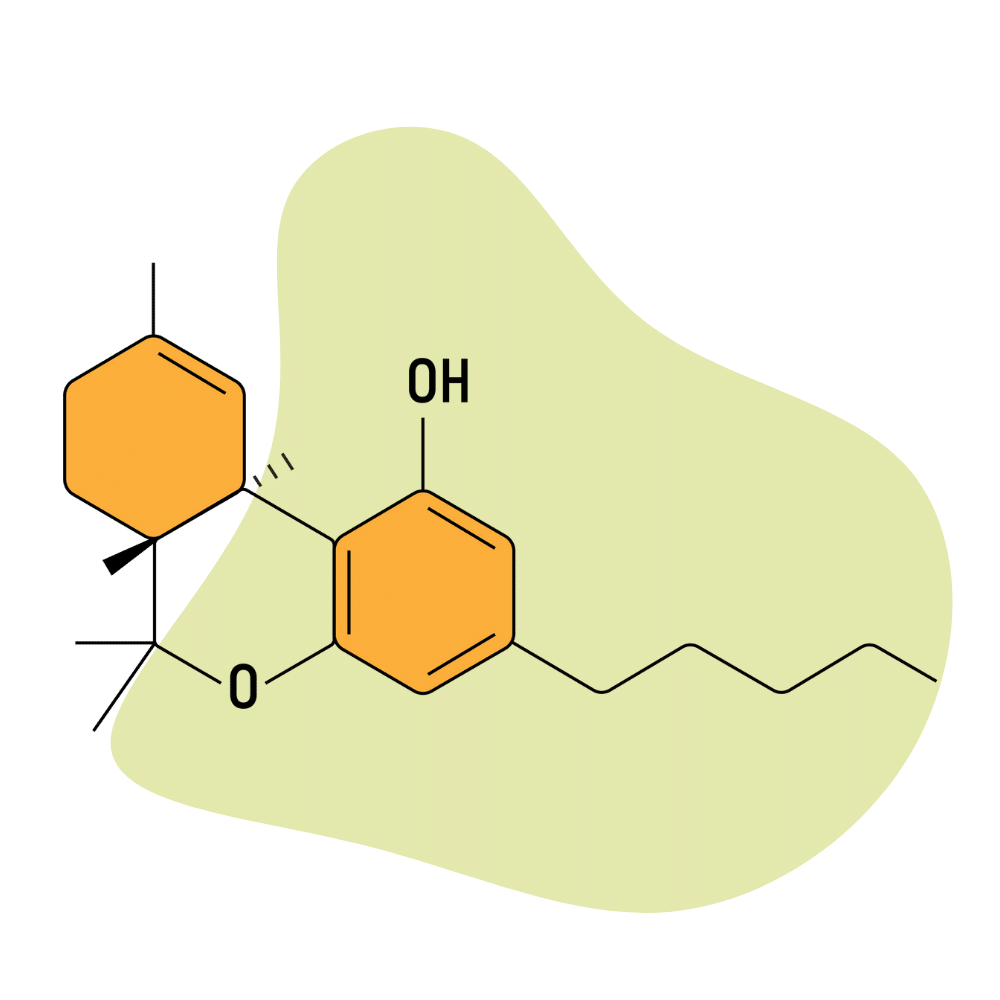
2. Delta 8 THC
There are two forms of THC — the delta 9 version mentioned above is by far the most abundant version found in the plant and is associated with the majority of the benefits from the raw plant.
Delta 8 THC forms as a natural byproduct of THC as it breaks down. Some of the THC breaks down into delta 8; the rest is converted to another cannabinoid known as CBN.
The delta 8 isomer is very similar to the delta 9 version. It’s psychoactive too, but only about 50% as strong. However, delta 8 THC is also significantly less likely to produce anxious side-effects — which is one of the most common side-effects of marijuana products.
Concentrations of delta 8 THC is present in very low concentrations, but there are some ways to increase the potency of this cannabinoid — such as aging the dried cannabis buds in high-oxygen environments or exposure to UV light. Most manufacturers will extract the delta 9 THC and use a chemical process to convert it into high-potency delta 8 instead.
Some companies are first converting CBD from hemp into delta 9 and then turning the delta 9 into the delta 8 isomer. This process is very labor-intensive and requires the use of toxic elements like heavy metal reagents and organic solvents.
The benefits of delta 8 THC include:
- Strong appetite stimulant
- Relieves anxiety & chronic stress
- Much longer shelf-life than delta 9 THC
- Supports neurological activity
- Relieves pain & inflammation
- Reduces intraocular pressure
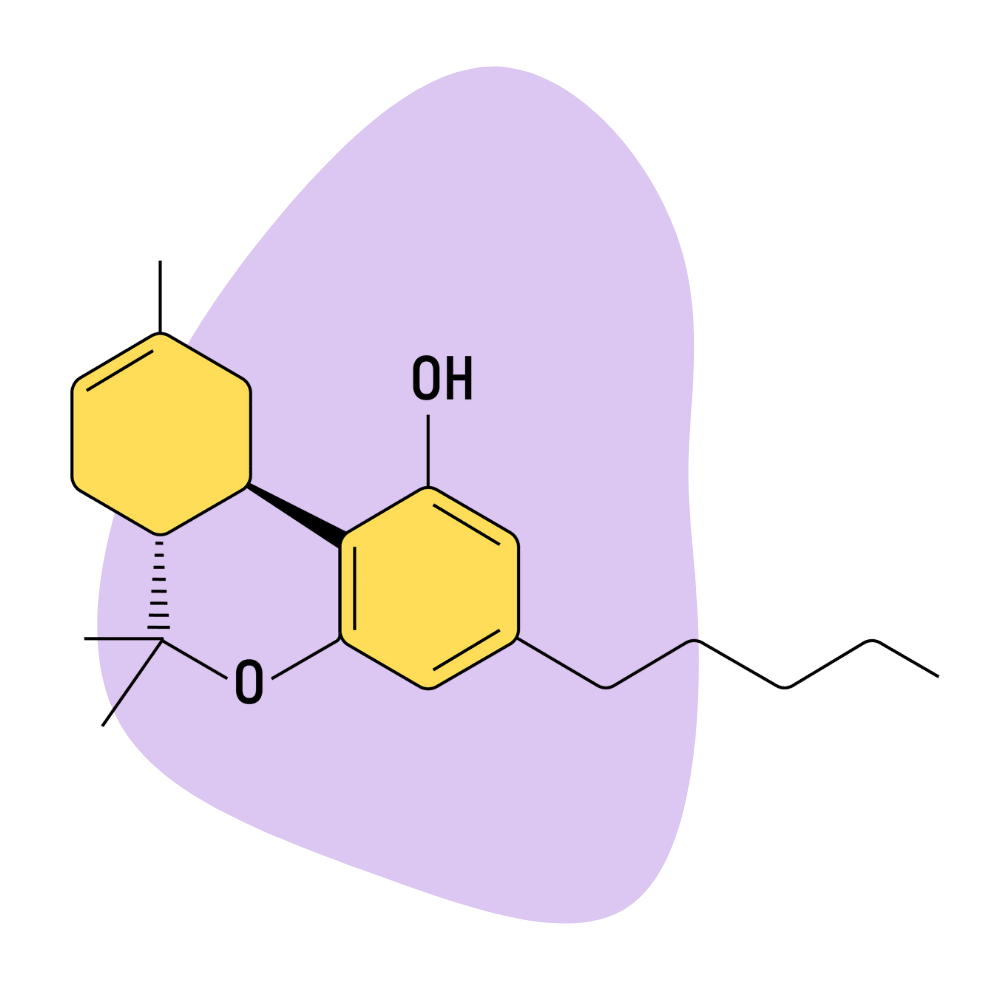
3. Delta 10 THC
Delta 10 THC is another isomer of THC — this time with the double-bond on the tenth carbon.
The effects of delta 10 THC are compatible with delta 8 in terms of potency, but closer to delta 9 in terms of the effects. It’s more stimulating and energizing, which makes it useful for daytime use.
Some people claim it helps them remain focused while at work or university, while also offering some of the creative ability enhancement associated with cannabis products.
This cannabinoid can be found in nature, but only in minuscule amounts. Most of the delta 10 on the market today comes from an isomerization lab.
The benefits of delta 10 THC include:
- Moderate appetite stimulant
- May relieve chronic pain or stress
- Longer shelf-life than delta 9 THC
- Stimulating & energizing effect
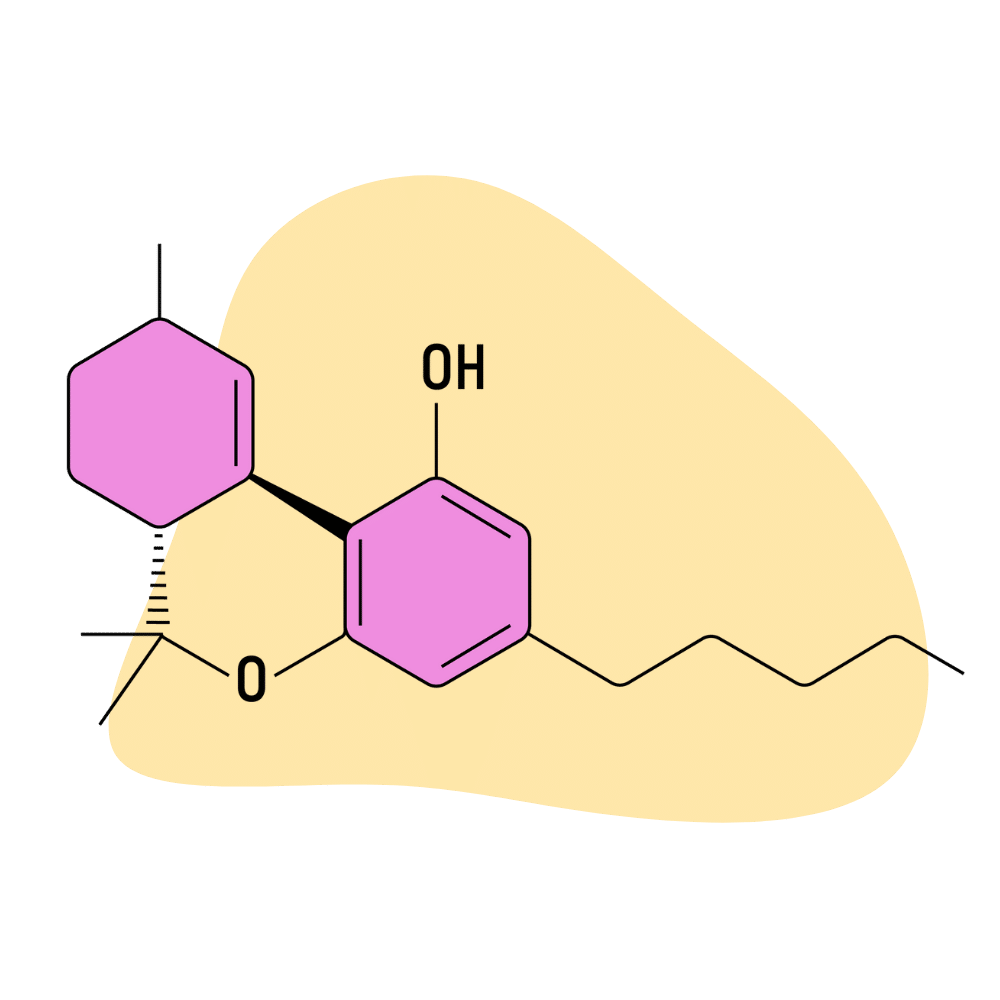
4. CBD (Cannabidiol)
CBD (cannabidiol) is the primary health-promoting ingredient in cannabis. It’s become extremely popular over the past couple of years for its ability to regulate pain, inflammation, anxiety, immune activity, sleep, mood, and much more.
CBD works by interfering with the breakdown of one of our naturally-occurring cannabinoids, known as anandamide. It’s also thought to bind to both the CB1 and CB2 endocannabinoid receptors. However, instead of activating these receptors, CBD is thought to improve the ability of our natural endocannabinoids to bind and activate them on their own.
This compound also interacts with the vanilloid receptors — which play a role in the regulation of pain, mood, and temperature control.
There’s some research that indicates CBD may bind to another yet undiscovered endocannabinoid receptor as well.
The benefits of CBD include:
- Alleviates pain & inflammation
- Improves sleep onset & quality
- Helps regulate immune function
- Offers neuroprotective effects
- Reduces acne & improves skin health
- Alleviates stress & anxiety
- May regulate mood & depression
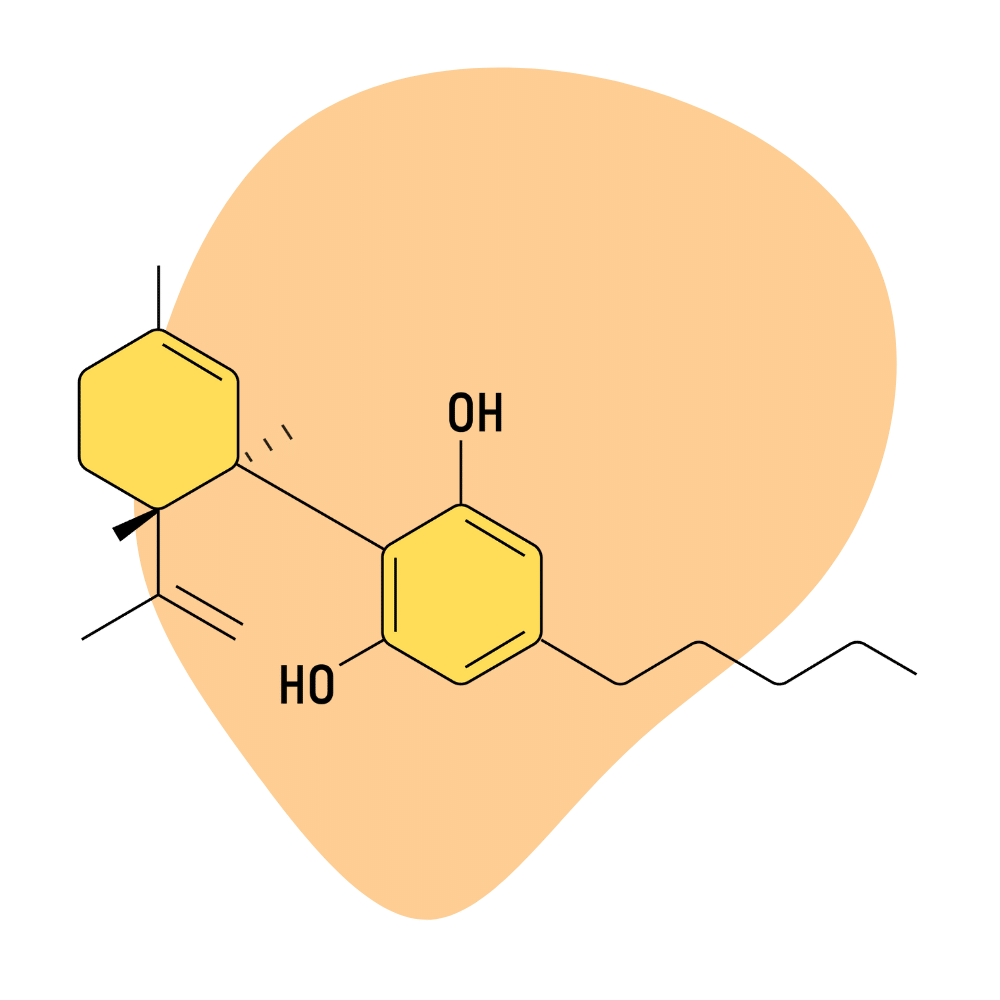
5. CBC (Cannabichromene)
CBC (cannabichromene) is the third-most abundant cannabinoid in the cannabis plant.
Unlike CBD and THC, this cannabinoid doesn’t have a strong impact on the ECS. Instead, CBC focuses most of its effects on the vanilloid receptors. It’s useful for managing chronic pain, mood, body temperature, and mood.

6. CBG (Cannabigerol)
CBG (cannabigerol) is referred to as the cannabinoid stem cell because it’s the precursor used to make THC, CBD, and CBC. Plants that are harvested early, before enzymes in the leaves have time to convert CBG into more advanced cannabinoids, have the highest levels of CBG.
This cannabinoid shares many similarities to CBD but with a stronger impact on a neurotransmitter known as GABA — which is the body’s primary neuro inhibitory molecule. It’s used to reduce electrical activity in the brain and the anxiety or stress response.
The benefits of CBG include:
- Stimulates the appetite
- Alleviates anxiety & stress
- Helps initiate sleep
- Kills bacteria & fungi
- Alleviates pain & inflammation
- May help the body fight cancer
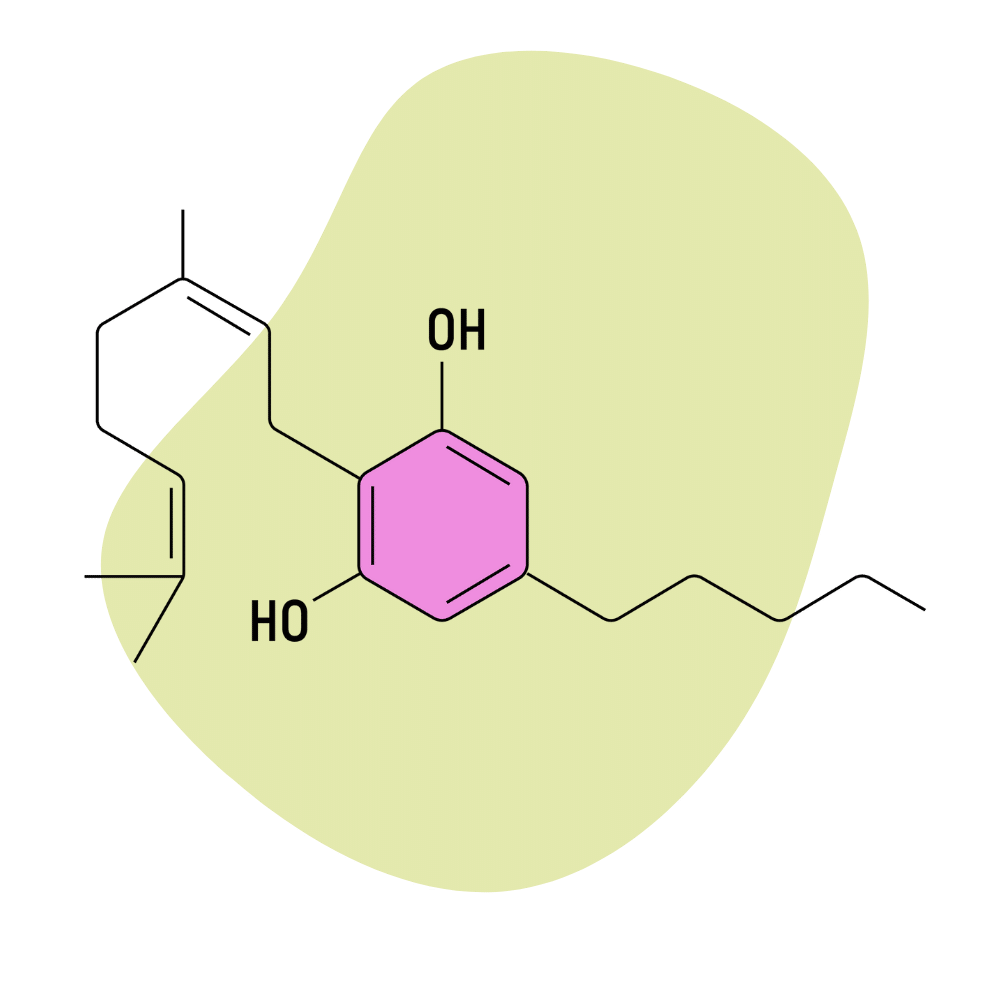
7. CBN (Cannabinol)
CBN (cannabinol) is the end product as THC breaks down. It has some mild psychoactive effects that are roughly 10% as strong as the effects of THC. Plants harvested late or cannabis buds that have been sitting for a long time tend to have the highest concentration of CBN.
This cannabinoid has long been associated with the sedative or “couch-lock” effects of marijuana — but recent evidence suggests this may not be the case. When studied on its own, CBN isn’t considered a sedative at all.
Instead, this cannabinoid has been shown to provide an impressive range of neuroprotective activity. Researchers are currently studying the impact of CBN for slowing the progression of neurodegenerative disorders such as ALS, multiple sclerosis, Huntington’s disease, and Parkinson’s disease.
The benefits of CBN include:
- Neuroprotective action
- May inhibit the growth of microorganisms
- Potent appetite stimulant
- May alleviate arthritis symptoms
- May reduce intraocular pressure (for glaucoma)
- Potent muscle-relaxant
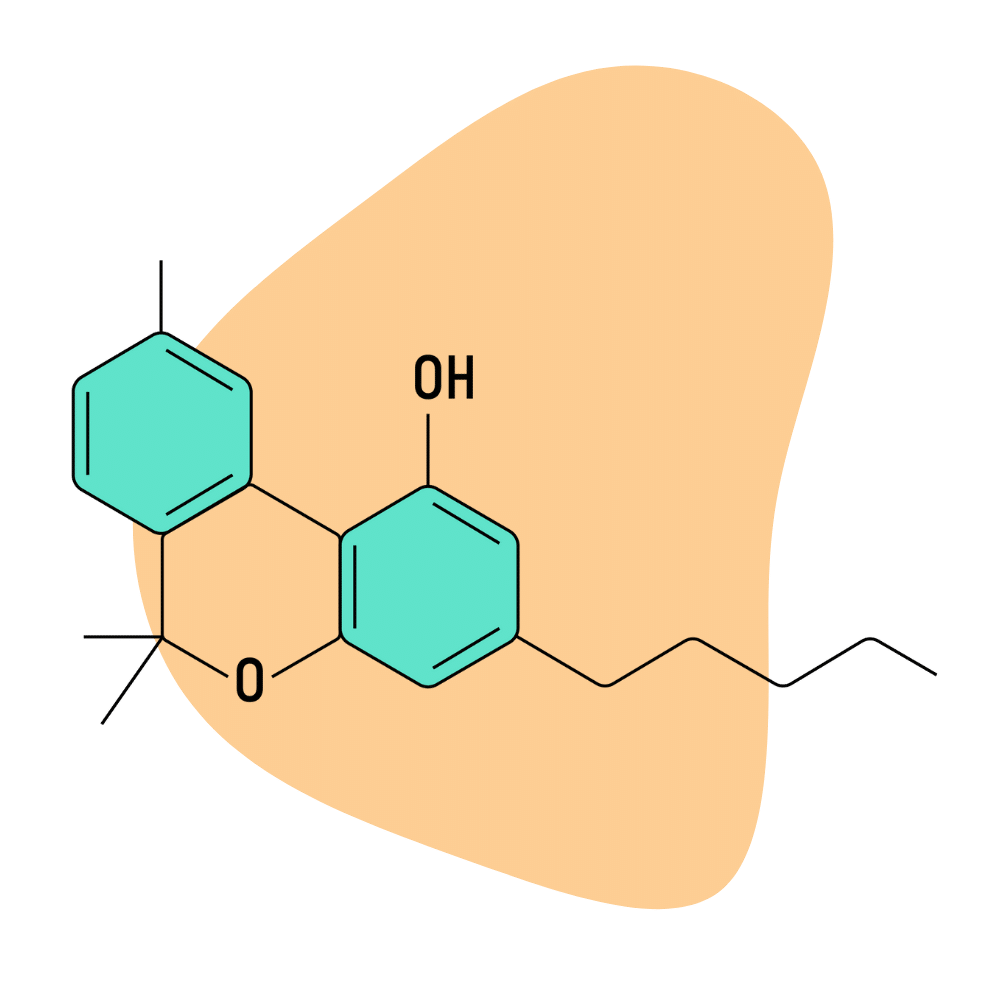
8. THCV (Tetrahydrocanabivarin)
THCV (tetrahydrocannabivarin) is only present in low concentrations in the marijuana plant and virtually absent in hemp. However, there’s been a push among breeders to create new strains of marijuana that have higher levels of THCV. One strain, in particular, known as Doug’s Varin, contains up to 28% THCV — which is the highest in the world.
The effects of this cannabinoid are psychoactive like THC, but about 25% as strong. It’s also been shown to reduce some of the psychoactive effects of THC when used in combination.
This cannabinoid is very stimulating and offers greater benefits towards enhancing focus, concentration, creativity, and flow states than THC. Some reports suggest this cannabinoid may be useful as a treatment option for ADHD as well.
Just like THC, there are two isomers of THCV — delta 8 THCV and delta 9 THCV.
The benefits of THCV include:
- Neuroprotective action
- May reduce insulin-resistance
- Reduces appetite
- May support ADHD
- Improves focus & concentration
- Boosts mental & physical energy
- Prevents the formation of acne
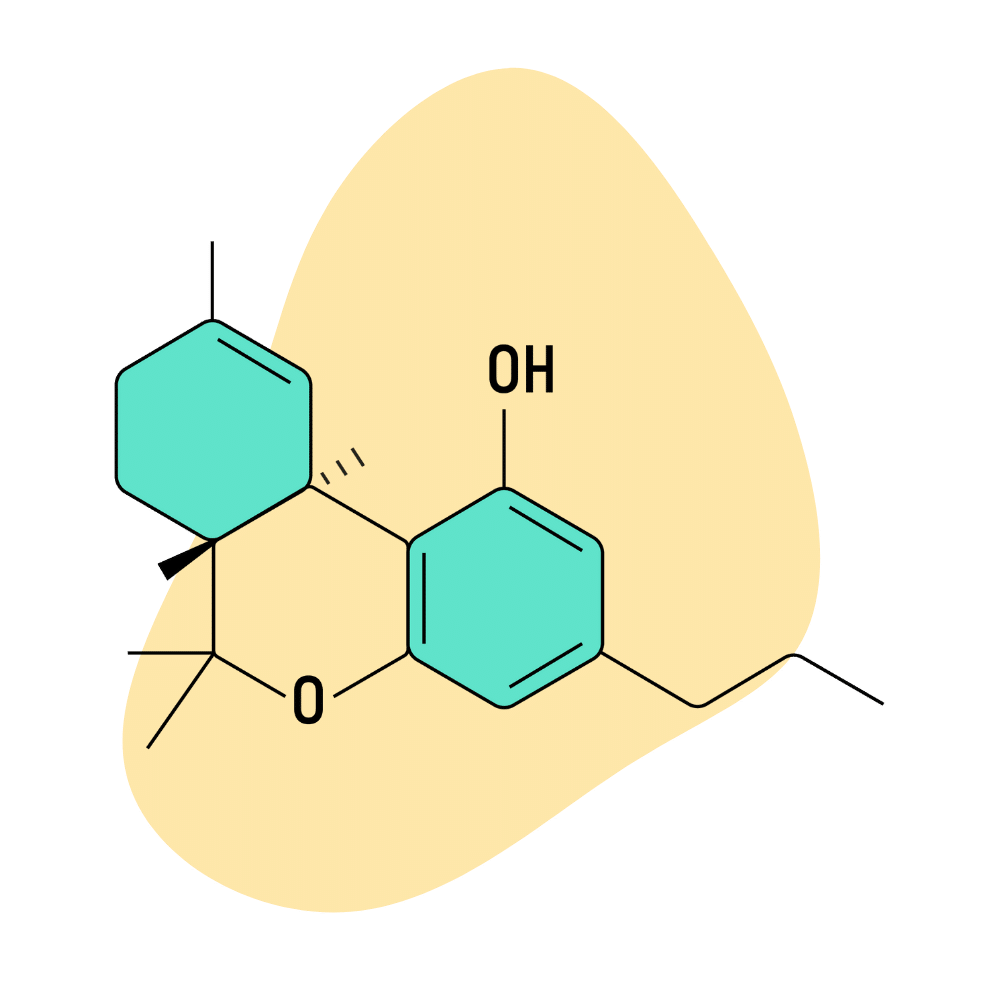
Terpenes
The second primary class of active ingredients in the cannabis plant is the terpenes.
Terpenes are small, aromatic compounds abundant in the natural world. Roses, citrus fruits, and lavender all owe their characteristic aroma to terpenes.
The resin of the cannabis plant contains a rich source of aromatic terpenes — many of which are shared with other species of plants. Limonene, one of the most abundant terpenes in the cannabis plant, is the primary component in the essential oil of citrus fruits.
There are lots of other examples as well — such a lavandin from lavender, myristicin from nutmeg, lupulin from hops, bisabolol from chamomile, and more.
Most terpenes offer medicinal value too. They work alongside the primary ingredients in marijuana, like THC and CBD, to provide additional anti-inflammatory, analgesic, or anxiolytic benefits.
Some terpenes even potentiate the effects of the cannabinoids by slowing their breakdown or improving absorption through the lungs and digestive system.
- Bisabolol — analgesic, antispasmodic, & vulnerary
- Borneol — anticancer, anti-inflammatory, & anti-coagulant
- Camphene — antioxidant, anti-inflammatory, & antifungal
- Caryophyllene — analgesic & anti-anxiety
- Carene — promotes bone healing & anti-inflammatory
- Eucalyptol — broncho-dilating & anti-phlegm
- Geraniol — anticancer & anti-inflammatory
- Humulene — anti-inflammatory & appetite-suppressant
- Limonene — uplifting, energizing, & antidepressant
- Linalool — calming & sedative
- Myrcene — calming & sedative
- Ocimene — antifungal, antiviral, & anti-inflammatory
- Pinene — anti-inflammatory, neuroprotective, antioxidant, & antimicrobial
- Terpineol — antioxidant, anti-inflammatory, & antimicrobial
- Terpinolene — anticancer & antimicrobial
- Nerolidol — antimicrobial & antioxidant
- Valencine — UV protectant, anti-inflammatory, & anti-allergy
Frequently Asked Questions About Marijuana
Some of the most common questions we get asked about marijuana and hemp.
1. Will CBD Oil Make Me Fail a Drug Test?
CBD is completely non-psychoactive and legal throughout most of the world. But it’s still an extract from the cannabis plant.
This has many people wondering whether CBD products, like CBD oils, capsules, or gummies, place them at risk of failing a drug test.
The only way to guarantee you’re not going to fail a drug test is to use products that contain no traceable THC. Products made purely from hemp that use a CBD isolate, or broad-spectrum THC-free base are very unlikely to register anything at all on a drug test.
These tests only look for THC, not CBD or other cannabinoids.
Full-spectrum hemp products contain only trace amounts of THC and are unlikely to result in a positive result for THC on a drug test — but it’s not impossible. Some people have tested positive after using only full-spectrum CBD oils.
2. Can Delta 8 THC or THC Extracts Make Me Fail A Drug Test?
The short answer here is yes — but it depends on the type of test.
Reagent drug tests and immunoassays are likely to indicate the presence of THC after using either of these extracts. Delta 8 THC may even appear on a drug test using high-tech equipment like mass spectrometry or gas chromatography because of how similar these two compounds are. They have identical molecular weights, which makes it difficult to tell the difference by machines that use molecular weights to differentiate different compounds.
THCV is less likely to trigger a fail on a drug test — but it’s still completely possible.
If you’ve got an upcoming drug test, you should abstain from all forms of cannabis extract aside from CBD isolates, CBG isolates, or CBC isolates — or else risk failing the test.
3. Can I Overdose on Marijuana?
There has never been a reported overdose of marijuana — but it is possible to take too much.
The best way to measure the toxicity of a compound is to look at the LD50. This stands for the “lethal dose for 50% of the population”. It’s a metric discovered by giving a group of mice increasingly high doses of a substance until 50% of them die from an overdose.
For marijuana, the LD50 is so high; it’s impossible to reach through normal means of consumption.
In rats, the LD50 is reported to be around 40 mg/kg and 130mg/kg in dogs and monkeys [29]. That works out to around 8.45 kg of THC in the average human (65 kg) — which is way more than is ever achievable through inhalation or ingestion.
The only way to realistically overdose on marijuana is through intravenous injection.
4. How Long Does Marijuana Stay in Your System?
Cannabis can remain detectable in the body up to 30 days after you use it. Some compounds, including THC, can remain detectable in hair for up to 90 days.
The amount of time cannabinoids remain in the body depends on what dose you take, how often you use it, your age (older and how fast your metabolism is.
Cannabinoids are fat-soluble, which allows them to build up in the body over time by storing them in the fat cells. If you use marijuana products regularly, it can take a lot longer to remove these compounds from the body than if you only use them once in a while.
One-off use of marijuana may be completely cleared from the body in as little as three days. Consistent, long-term use may remain in the body for 2 to 4 weeks.
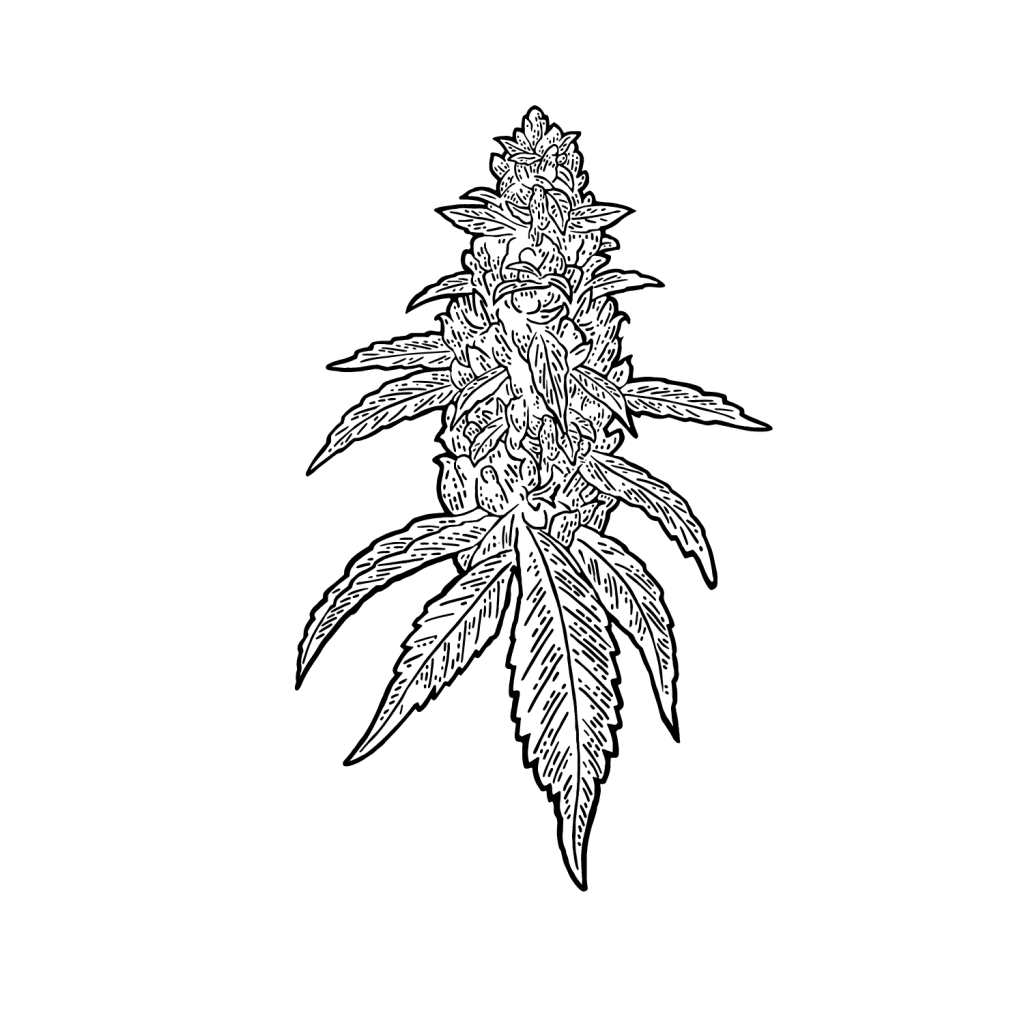
Final Thoughts: The Future of Cannabis?
Cannabis is a useful plant medicine. It’s used as a treatment for anxiety, depression, inflammation, pain, and a variety of other health conditions. Marijuana and its chief ingredient — THC — is used as a tool for self-discovery and mind-expansion due to the psychoactive effects.
There are two types of cannabis from a regulatory standpoint — hemp plants (non-psychoactive) and marijuana plants (psychoactive).
Hemp is considered legal in most parts of the world and has become an extremely popular supplement over the last several years.
Marijuana is illegal in most countries (with the exception of Canada and about a dozen US states). Most experts believe marijuana will become legal in the next couple of years as the evidence supporting its safety and various health benefits becomes harder to disagree with.
Subscribe To Get a Weekly Dose of Psychedelics In Your Inbox 🌈 🍄 🐍
References
- Bakas, T., Van Nieuwenhuijzen, P. S., Devenish, S. O., McGregor, I. S., Arnold, J. C., & Chebib, M. (2017). The direct actions of cannabidiol and 2-arachidonoyl glycerol at GABAA receptors. Pharmacological research, 119, 358-370.
- Sales, A. J., Crestani, C. C., Guimarães, F. S., & Joca, S. R. (2018). Antidepressant-like effects induced by cannabidiol are dependent on brain serotonin levels. Progress in Neuro-Psychopharmacology and Biological Psychiatry, 86, 255-261.
- Charney, D. S., Woods, S. W., Goodman, W. K., & Heninger, G. R. (1987). Serotonin functions in anxiety. Psychopharmacology, 92(1), 14-24.
- Seeman, P. (2016). Cannabidiol is a partial agonist at dopamine D2High receptors, predicting its antipsychotic clinical dose. Translational psychiatry, 6(10), e920-e920.
- Zweifel, L. S., Fadok, J. P., Argilli, E., Garelick, M. G., Jones, G. L., Dickerson, T. M., … & Palmiter, R. D. (2011). Activation of dopamine neurons is critical for aversive conditioning and prevention of generalized anxiety. Nature neuroscience, 14(5), 620-626.
- Zuardi, A. W., Cosme, R. A., Graeff, F. G., & Guimaraes, F. S. (1993). Effects of ipsapirone and cannabidiol on human experimental anxiety. Journal of Psychopharmacology, 7(1_suppl), 82-88.
- Cota, D. (2008). The role of the endocannabinoid system in the regulation of hypothalamic‐pituitary‐adrenal axis activity. Journal of neuroendocrinology, 20, 35-38.
- Russo, E. B., Guy, G. W., & Robson, P. J. (2007). Cannabis, pain, and sleep: lessons from therapeutic clinical trials of Sativex®, a cannabis‐based medicine. Chemistry & biodiversity, 4(8), 1729-1743.
- Takeda, S., Usami, N., Yamamoto, I., & Watanabe, K. (2009). Cannabidiol-2′, 6′-dimethyl ether, a cannabidiol derivative, is a highly potent and selective 15-lipoxygenase inhibitor. Drug metabolism and disposition, 37(8), 1733-1737.
- Caterina, M. J., & Julius, D. (2001). The vanilloid receptor: a molecular gateway to the pain pathway. Annual review of neuroscience, 24(1), 487-517.
- Russo, E. B., Guy, G. W., & Robson, P. J. (2007). Cannabis, pain, and sleep: lessons from therapeutic clinical trials of Sativex®, a cannabis‐based medicine. Chemistry & biodiversity, 4(8), 1729-1743.
- Johnson, J. R., Burnell-Nugent, M., Lossignol, D., Ganae-Motan, E. D., Potts, R., & Fallon, M. T. (2010). Multicenter, double-blind, randomized, placebo-controlled, parallel-group study of the efficacy, safety, and tolerability of THC: CBD extract and THC extract in patients with intractable cancer-related pain. Journal of Pain and symptom management, 39(2), 167-179.
- van de Donk, T., Niesters, M., Kowal, M. A., Olofsen, E., Dahan, A., & van Velzen, M. (2019). An experimental randomized study on the analgesic effects of pharmaceutical-grade cannabis in chronic pain patients with fibromyalgia. Pain, 160(4), 860.
- Wade, D. T., Collin, C., Stott, C., & Duncombe, P. (2010). Meta-analysis of the efficacy and safety of Sativex (nabiximols), on spasticity in people with multiple sclerosis. Multiple Sclerosis Journal, 16(6), 707-714.
- Blake, D. R., Robson, P., Ho, M., Jubb, R. W., & McCabe, C. S. (2006). Preliminary assessment of the efficacy, tolerability, and safety of a cannabis-based medicine (Sativex) in the treatment of pain caused by rheumatoid arthritis. Rheumatology, 45(1), 50-52.
- Moreno-Martet, M., Feliú, A., Espejo-Porras, F., Mecha, M., Carrillo-Salinas, F. J., Fernández-Ruiz, J., … & de Lago, E. (2015). The disease-modifying effects of a Sativex-like combination of phytocannabinoids in mice with experimental autoimmune encephalomyelitis are preferentially due to Δ9-tetrahydrocannabinol acting through CB1 receptors. Multiple sclerosis and related disorders, 4(6), 505-511.
- Pellati, F., Bargonetti, V., Brighenti, V., Biagi, M., Benvenuti, S., & Corsi, L. (2018). Cannabis sativa L. and non-psychoactive cannabinoids: their chemistry and role against oxidative stress, inflammation, and cancer. BioMed research international, 2018.
- Lowin, T., Tingting, R., Zurmahr, J., Classen, T., Schneider, M., & Pongratz, G. (2020). Cannabidiol (CBD): A killer for inflammatory rheumatoid arthritis synovial fibroblasts. Cell death & disease, 11(8), 1-11.
- Dvorak, M., Watkinson, A., McGlone, F., & Rukwied, R. (2003). Histamine induced responses are attenuated by a cannabinoid receptor agonist in human skin. Inflammation Research, 52(6), 238-245.
- Srivastava, M. D., Srivastava, B. I. S., & Brouhard, B. (1998). Δ9 tetrahydrocannabinol and cannabidiol alter cytokine production by human immune cells. Immunopharmacology, 40(3), 179-185.
- Kozela, E., Pietr, M., Juknat, A., Rimmerman, N., Levy, R., & Vogel, Z. (2010). Cannabinoids Δ9-tetrahydrocannabinol and cannabidiol differentially inhibit the lipopolysaccharide-activated NF-κB and interferon-β/STAT proinflammatory pathways in BV-2 microglial cells. Journal of biological chemistry, 285(3), 1616-1626.
- Vuolo, F., Petronilho, F., Sonai, B., Ritter, C., Hallak, J. E., Zuardi, A. W., … & Dal-Pizzol, F. (2015). Evaluation of serum cytokines levels and the role of cannabidiol treatment in animal models of asthma. Mediators of inflammation, 2015.
- Jan, T. R., Farraj, A. K., Harkema, J. R., & Kaminski, N. E. (2003). Attenuation of the ovalbumin-induced allergic airway response by cannabinoid treatment in A/J mice☆. Toxicology and applied pharmacology, 188(1), 24-35.
- Kaplan, B. L., Springs, A. E., & Kaminski, N. E. (2008). The profile of immune modulation by cannabidiol (CBD) involves deregulation of nuclear factors of activated T cells (NFAT). Biochemical pharmacology, 76(6), 726-737.
- Tsuji, F., Murai, M., Oki, K., Inoue, H., Sasano, M., Tanaka, H., … & Aono, H. (2010). Effects of SA13353, a transient receptor potential vanilloid 1 agonist, on leukocyte infiltration in lipopolysaccharide-induced acute lung injury and ovalbumin-induced allergic airway inflammation. Journal of pharmacological sciences, 1003290370-1003290370.
- Babson, K. A., Sottile, J., & Morabito, D. (2017). Cannabis, cannabinoids, and sleep: a review of the literature. Current psychiatry reports, 19(4), 1-12.
- Gates, P. J., Albertella, L., & Copeland, J. (2014). The effects of cannabinoid administration on sleep: a systematic review of human studies. Sleep medicine reviews, 18(6), 477-487.
- Laucks, P., & Salzman, G. A. (2020). The Dangers of Vaping. Missouri medicine, 117(2), 159.
- Rosenkrantz, H. (1983). Cannabis, marihuana, and cannabinoid toxicological manifestations in man and animals. In Fehr KO, Kalant H. Cannabis and Health Hazards: Proceedings of an ARF/WHO Scientific Meeting on Adverse Health and Behavioral Consequences of Cannabis Use: Toronto: Addiction Research Foundation (pp. 91-175).

